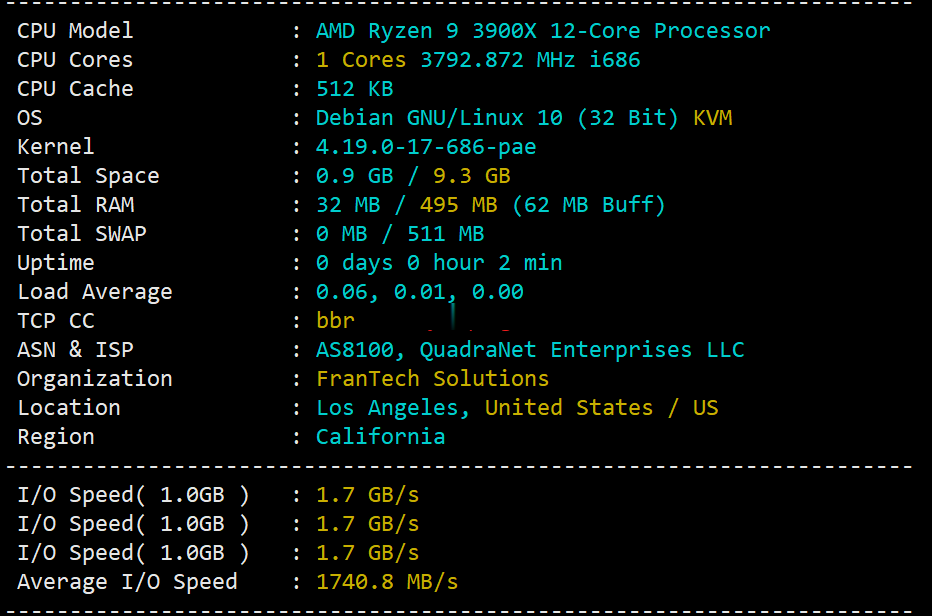circulationwww.163gg.com
www.163gg.com 时间:2021-03-18 阅读:()
Thefull,proofreadversionofthisreviewwaspublishedbyElsevierandcanbefoundathttp://www.
sciencedirect.
com/science/article/pii/S1369527413000878Colonicbacterialmetabolitesandhumanhealth1WendyR.
Russell1#,LesleyHoyles2#,HarryJ.
Flint1*andMarc-‐EmmanuelDumas2*21.
RowettInstituteofNutritionandHealth,UniversityofAberdeen,GreenburnRoad,Bucksburn,3AberdeenAB219SB,UK42.
ComputationalandSystemsMedicine,DepartmentofSurgeryandCancer,FacultyofMedicine,5ImperialCollegeLondon,ExhibitionRoad,LondonSW72AZ,UK67#WRRandLHmadeequalcontributionstothisreview.
8*jointcorrespondingauthors(emailaddresses):9Marc-‐EmmanuelDumas(m.
dumas@imperial.
ac.
uk)10HarryJFlint(h.
flint@abdn.
ac.
uk)1112Abstract(100-‐120words)13Theinfluenceofthemicrobial–mammalianmetabolicaxisisbecomingincreasinglyimportantfor14humanhealth.
Bacterialfermentationofcarbohydratesandproteinsproducesshort-‐chainfatty15acids(SCFA)andarangeofothermetabolitesincludingthosefromaromaticaminoacid(AAA)16fermentation.
SCFAinfluencehosthealthasenergysourcesandviamultiplesignallingmechanisms.
17Bacterialtransformationoffibre-‐relatedphytochemicalsisassociatedwithareducedincidenceof18severalchronicdiseases.
The'gut–liveraxis'isanemergingareaofstudy.
Microbialdeconjugationof19xenobioticsandreleaseofaromaticmoietiesintothecoloncanhaveawiderangeofphysiological20consequences.
Inaddition,theroleofthegutmicrobiotaincholinedeficiencyinnon-‐alcoholicfatty21liverdiseaseandinsulinresistanceisreceivingincreasedattention.
222324Highlights:25-‐Diet-‐drivenchangesinmicrobially-‐producedSCFAcaninfluencehealthviasignalling26-‐Gutmicrobiotamediatesthereleaseandtransformationofmanybioactivephenolics27-‐Gutmicrobiotadegradesdietarycholinetomethylamines28-‐Interactionsbetweenthemicrobiota,inflammasomesandhostinfluenceliverdisease293031Abbreviations:SCFA,short-‐chainfattyacids;CHO,carbohydrate;FFAR,freefattyacidreceptor;WL,32weightloss;NSP,non-‐starchpolysaccharide'fibre';AAA,aromaticaminoacids;NAFLD,non-‐alcoholic33fattyliverdisease;NASH,non-‐alcoholicsteatohepatitis;HMS,hepaticmacrovesicularsteatosis;PC,34Thefull,proofreadversionofthisreviewwaspublishedbyElsevierandcanbefoundathttp://www.
sciencedirect.
com/science/article/pii/S1369527413000878phosphatidylcholine;PEMT,phosphatidylethanolamine-‐N-‐methyltransferase;SNP,singlenucleotide35polymorphism;TMA,trimethylamine;TMAO,trimethylamine-‐N-‐oxide.
36Introduction37Thehumanlargeintestineiscolonisedbydensemicrobialcommunitiesthatutilisebothdiet-‐and38host-‐derivedenergysourcesforgrowth,predominantlythroughfermentativemetabolism.
This39highlydiversecommunityhasthecapacitytoperformanextraordinaryrangeofbiochemical40transformationsthatgowellbeyondthoseencodedbythehostgenome,andtheseactivitiesexert41animportantinfluenceuponmanyaspectsofhumanhealth.
Metabolitesformedbythegut42microbiotaarelargelydeterminedbythecompositionofthedietandthepatternoffoodintake,and43itisnowclearthatthespeciescompositionofthecolonicmicrobiotaisitselfalteredbythediet44[1*,2,3**].
Thisreviewwillconsiderselectedexampleswhererecentprogresshasbeenmadein45understandingthelinksbetweendiet,gutmicrobialactivityandmetabolitesrelevanttohealth.
4647Bacterialmetabolitesderivedfromthefermentationofplant-‐derived48carbohydratesandtheirimpactonthehost4950Manycarbohydrates(CHOs)presentinplant-‐derivedfoodsaredigestedslowly,ifatall,inthesmall51intestine,makingthemavailableformicrobialfermentationinthelargeintestine.
Intakeofstarch52thatisresistanttodigestioninthesmallintestine(resistantstarch)canhavebenefitsformetabolic53health[4]andresultsinchangesinthegutmicrobiota[1*].
Recentworkalsoshowsabeneficial54influenceofwholegrainintakeuponinflammation,againwithconcomitantchangesinthegut55microbiota[5*].
Diet-‐inducedchangesinthemetabolicactivityofthegutmicrobiotaarethought56likelytomediatetheseeffects.
5758Hexoseandpentosesugarsarefermentedbyisolatedhumancolonicbacteriaviapathwaysleading59totheformationofacetate,succinate,propionate,butyrate,formate,lactate,ethanol,hydrogen60andCO2,dependingonthestrainandspecies.
ButyrateformationoccursincertainFirmicutes61bacteria,eitherviabutyratekinase(inmanyClostridiumandCoprococcusspecies)orviabutyryl62CoA:acetateCoAtransferase[6].
Thelatterpathwayisfoundinthenumericallypredominant63butyrate-‐producingspeciesofRoseburia,Eubacteriumrectale,E.
halliiandFaecalibacterium64prausnitzii,andinvolvesthenetuptakeofexternalacetate[7].
Acetateisproducedbymost65anaerobes,includingacetogensthatareabletoperformreductiveacetogenesisfromformateor66hydrogenplusCO2.
Producersofsuccinateandpropionatelargelybelongtothephylum67Thefull,proofreadversionofthisreviewwaspublishedbyElsevierandcanbefoundathttp://www.
sciencedirect.
com/science/article/pii/S1369527413000878Bacteroidetes,butalsoincludesomeFirmicutes.
Lactatecanbeformedbymanygroups,butis68generallyconvertedintoacetate,propionateorbutyratebyasubsetoflactate-‐utilizingspecies[8].
69FormationofthegaseshydrogenandCO2varieswidelybetweenspeciesinpureculture;inthe70mixedcommunitytheseproductsarepartiallyconvertedtoacetate,methaneorhydrogensulfide71[9].
Thenetoutcomeofallofthesecomplexcross-‐feedinginteractionsforatypicalhealthy72microbiotaisthat,infaecalsamples,acetateisthedominantshort-‐chainfattyacid(SCFA)detected73(typically4070mM)followedbypropionateandbutyrate(each1030mM)[10].
While74alternativeproductssuchasethanol,succinateandlactatearenormallyfoundatlower75concentrations,theycanaccumulateinsomecircumstancesandalinkhasbeenproposedbetween76endogenousalcoholformationandnon-‐alcoholicsteatohepatitis[11].
7778Attheseconcentrations,SCFAhaveamajorimpactonthelargeintestinalenvironmentandon79absorptionfromthelumen.
Whilebutyrateislargelyutilisedbythegutepithelium,andpropionate80islargelymetabolisedintheliver,acetateistheSCFAthatreachesthehighestconcentrationsin81plasma[10].
Thereisincreasingevidencethatacetateplaysanimportantroleincontrolling82inflammationandincombatingpathogeninvasion[12,13].
Acetateandlactatewerealsofound83recentlytoinfluencecyclingeneexpressionandepithelialcellproliferationinapH-‐dependent84mannerinvitro[14].
Theimportanceofbutyrateasanenergysourceforepithelialcellshaslong85beenrecognised,butitsroleinregulatinginflammation,cellulardifferentiationandapoptosis,and86inhelpingtopreventcolorectalcancer,isstillemerging[15].
Interestingly,butyratewasrecently87foundtobethemostpotentSCFAinactivatingtheAP-‐1signallingpathwayinepithelialcelllines88[16].
InteractionshavebeenrecognisedbetweenSCFAandthehostcellreceptorsFFAR2andFFAR389thatmightinfluencesatiety,protectagainstdiet-‐inducedobesityandimproveinsulinsensitivity,90withpropionateconsideredtohaveapotentiallyimportantrole17,18].
Inviewofthisitis91importanttounderstandhowdietandmicrobiotacompositioncaninfluencerelative,aswellas92total,SCFAproduction.
Studiesinobesesubjectsonweightlossdietsdemonstratethatdietary93intakeofCHOhasamajorimpactonfaecalSCFAconcentrations[19,20**]presumablyreflecting94decreasedfermentationinthecolon(Fig.
1).
Moresurprising,however,isthatbutyratepercent95respondeddisproportionately,aneffectthatcorrelateswithamarkeddecreaseintheRoseburia-‐E.
96rectalegroupofbutyrate-‐producingbacteria[19].
Thismaybeexplainedbythegreaterdependence97ofthisgroup,comparedwithothermembersofthemicrobiota,onintakeofresistantdietaryCHOs,98andprovidesevidencethatSCFArelativeproductionratesareresponsivetodietcomposition.
An99inverserelationshiphasbeennotedbetweenfaecalpHandbutyrateconcentrationinvivo[21];this100Thefull,proofreadversionofthisreviewwaspublishedbyElsevierandcanbefoundathttp://www.
sciencedirect.
com/science/article/pii/S1369527413000878islikelytoreflectthegreatcompetitiveabilityofsomebutyrate-‐producersatthereducedpHarising101fromactivefermentationintheproximalcolon[22].
102Decreasednumbersofbutyrate-‐producingbacteria,especiallyFaecalibacteriumprausnitzii,have103beennotedinpatientssufferingfromCrohn'sdisease.
Thisspeciesexertsanti-‐inflammatoryeffects104thatappeartoinvolvesolublefactorsinadditiontobutyrate[23].
Interestingly,F.
prausnitziiwas105recentlyshowntodiminishtheimpactoftheacetate-‐producingspeciesBthetaiotaomicronon106mucusproductionandgobletcelldevelopmentinagnotobioticrodentmodel[24].
107108Formationandmetabolismofaromaticcompounds109110Fibre-‐relatedphytochemicals111Itissuggestedthattheinverserelationshipbetweentheintakeoffibre-‐richdietsandtheincidence112ofseveralchronicdiseasesismediatedinpartbythegutmicrobiota.
Microbialreleaseof113phytochemicalmetabolitesmaybeacontributingfactorandmostwidelystudiedfordisease114preventionarethearomaticmetabolitesproducedbythephenylpropanoidpathway[25,26].
115Increasingthefibrecontentofthedietfrom8.
8to14gday-‐1inahumanvolunteerstudyresultedin116significantlyincreasingcertainphenolicacidsandtheirderivativesinthegut,specificallyferulicacid,1174-‐hydroxy-‐3-‐methoxyphenylpropionicacidand3-‐hydroxyphenylpropionicacid[20].
Ferulicacid,118whichisfoundextensivelyboundtoplantpolysaccharides,canbereleasedandmetabolisedbythe119gutmicrobiota[20,27](Fig.
2).
Indeed,themajorestersofotherphenolicacidssuchascaffeicacid120(chlorogenicandcaftaricacid)arealsorapidlyde-‐esterifiedbyhumanfaecalmicrobiota[28].
It121appearsthatthegutmicrobiotacaneffectivelyde-‐esterifycompounds,whethertheconjugateis122quinicacid,tartaricacidorasugarmoietytoreleasetheaglyconeforfurthermetabolism.
Gut123bacteriacanalsoeffectivelyhydrogenatetheα,β-‐unsaturatedbondpresentonthesidechainof124phenolicacids[27]andtheextenttowhichthisoccursappearstobedependentonadditional125dietaryfactors,withhigh-‐proteindietsdecreasingtheefficiencyofthistransformation[20].
Site-‐126specificdehydroxylationanddemethylationofthephenolichydroxylpresentinphenolicacidshas127alsobeenobserved[20,27].
Theresultantmicrobialproductsofferulicacidmetabolismhad128differingeffectsonprostanoidproductioninvitrosuggestingthatthemicrobialtransformationof129dietarycompoundswillhaveimportantconsequencesforinflammation[27,29].
130131Aromaticaminoacidmetabolites132Proteinmetabolismisamajoralternativemechanismforproductionofaromaticmetabolites[30]as133observedinrecenthumandietaryinterventionsinvolvingcarefullycontrolledintakesofCHOand134Thefull,proofreadversionofthisreviewwaspublishedbyElsevierandcanbefoundathttp://www.
sciencedirect.
com/science/article/pii/S1369527413000878protein[20].
Untilrecently,themajormetabolitesofaromaticaminoacid(AAA)fermentationwere135consideredtobephenol,p-‐cresolandindole,withp-‐cresolsuggestedtobeaproductofphenol136catabolism.
Ithasnowbeendemonstratedthatamuchwidermetabolicpathwayofmetabolism137existsforallthreeAAAs[31].
Inparticular,phenylaceticacid,4-‐hydroxyphenylaceticacidandindole-‐1383-‐aceticacidwerefoundtobemajor(de-‐aminatedandchain-‐shortened)productsofphenylalanine,139tyrosineandtryptophan,respectively[31].
Bacteriacapableofproducingtheseproductscould140effectivelymetaboliseallthreeAAAsubstrates.
TheseincludedBacteroidesthetaiotaomicron,B.
141eggerthii,B.
ovatus,B.
fragilis,ParabacteroidesdistasonisandtheGram-‐positivebacteria142ClostridiumbartlettiiandEubacteriumhallii.
Bacterialspeciesthatdidnotsubstantiallyproduce143thesede-‐aminatedandchain-‐shortenedproductswereidentified.
TheseincludedMegamonas144hypermegale,Roseburiaintestinalis,Ruminococcusobeum,Eubacteriumrectaleand145Faecalibacteriumprausnitzii,butstrainsofthesespeciesoftenproducedhigheramountsofbenzoic146acid,4-‐hydroxybenzoicacidandindole-‐3-‐carboxylicacidandoxidationproductsincluding147phenylpyruvicacid,phenyllacticacid,4-‐hydroxyphenyllacticacid,indole-‐3-‐pyruvicacidandindole-‐3-‐148lacticacid.
GiventhatcertainspeciesofgutbacteriacanmetaboliseallthreeAAAsbyspecific149mechanisms,itislikelythatotherstructuralformsofaminoacidscanundergothesemolecular150transformations.
Thiswillgiverisetoarangeofnovelmetabolites,whichrequiretobeinvestigated151toassesstheirpotentialtoaffecthumanhealth.
152153Itisclearthatmacronutrientbalanceinfluencesnotonlythecompositionofthegutmicrobiotabut154alsotheavailabilityofaromaticmetabolites.
CertainmetabolitessuchasSCFAandphenyl155metabolitescanbeproducedbybacterialmetabolismofbothCHOandproteininthelargeintestine,156whereascertainbranched-‐chainfattyacidsandnitrogen-‐containingmetabolitesareconsideredto157bederivedfromproteinmetabolismalone.
Thereisapositiveassociationbetweenanimalprotein158consumption(specificallyredandprocessedmeat)andcolorectalcancer[32].
Evidenceisalso159beginningtoemergethattheconcentrationsofaromaticgutmetabolitesinthesystemiccirculation160playsaroleinvascularhealthand[33].
161162Enterohepaticcirculationandβ-‐glucuronidase163Manydiet-‐derivedaromaticcompounds,includingdrugs,aretreatedasxenobioticsandare164conjugatedintheliverfollowedbyreleaseintotheintestineviathebile.
Oneofthemain165mechanismsforconjugationisglucuronidation,butithasbeenknownforsometimethatbacterial166β-‐glucuronidasesinthelargeintestinetendtocleavetheseconjugates,thusreleasingthearomatic167moietyandmakingitavailableagainforre-‐absorption.
ThegusgenefromEscherichiacoliwas168originallyidentifiedasencodingthisactivity.
Arecentsurveyuseddegenerategusprimerstodetect169Thefull,proofreadversionofthisreviewwaspublishedbyElsevierandcanbefoundathttp://www.
sciencedirect.
com/science/article/pii/S1369527413000878relatedgenesamongthefaecalmicrobiotafrom10healthyvolunteers;thisshowedahighlyuneven170distributionwith60ofsequencesaccountedforbyonly4operationaltaxonomicunits,whilein171total96ofsequencescamefromFirmicutesand3fromE.
coli[34].
Itseemslikelythatthis172activityisassociatedwithenzymesinvolvedindegradingplantpolysaccharides.
Thecontributionof173asecondputativeβ-‐glucuronidasegeneidentifiedfrommetagenomiclibraries[35]hasstilltobe174fullyestablished[34].
175176The'gut–liver'axis,dietaryamines,theintestinalmicrobiotaandthe177methylamines'pathway178The'gut–liver'axis179Giventheexposureofthelivertointestinal-‐derivedcatabolitesandthemicrobiotatobiliary/waste180products,the'gut–liveraxis'isreceivinggreatattentionwithrespecttohosthealthanditspotential181toaffectsystemichostprocesses[36].
Arecentstudyhasnicelydemonstratedthedirect182involvementofthegutmicrobiotainthedevelopmentofobesity-‐independentnon-‐alcoholicfatty183liverdisease(NAFLD),andthemicrobiota'sinfluenceonwholebodyglucosehomeostasisandliver184lipidmetabolism[37**].
Germ-‐freemiceinoculatedwithintestinalmicrobiotafromamousethat185developedhyperglycaemiaandhadahighplasmaconcentrationofpro-‐inflammatorycytokinesafter186beingfedahigh-‐fatdietdevelopedhepaticmacrovesicularsteatosis(HMS)afterhigh-‐fatfeeding,187withincreasedexpressionofhepaticgenesinvolvedinde-‐novolipogenesisandlipiduptake(SREBP,188ChREBP,acetyl-‐CoAcarboxylase1andCD36)observed.
Incomparison,germ-‐freemiceinoculated189withfaecesfromamousethatwasnormoglycaemicandhadalowerlevelofsystemicinflammation190afterbeingfedahigh-‐fatdietdevelopedlow-‐levelsteatosisonthesamediet[37**].
Differences191wereobservedinthefaecalmicrobiotaofthetwogroupsofmice:LachnospiraceaeandBarnesiella192(Porphyromonadaceae)sequencesweresignificantlyoverrepresentedintheHMSmice,whilethe193low-‐levelsteatosismicehadanincreasednumberofsequencesrelatedtoBacteroidesvulgatus.
194Concentrationsofisobutyrateandisovalerate,branched-‐chainaminoacidsresultingfromthe195bacterialfermentationofvalineandleucine,respectively,weresignificantlyhigherinthecaecumof196theHMSmice.
Inaddition,theseanimalshadsignificantlyhigherfastingglycaemia,fasting197insulinaemia,homeostasismodelassessment—insulinresistanceindexandleptinaemia,andhigher198plasmaconcentrationsofaspartateaminotransferasethantheanimalsthatdevelopedlow-‐level199steatosis.
Takentogether,theseresultsdemonstratethatthegutmicrobiotaconstitutesan200environmentalfactordrivingtheprogressionofNAFLD[37**].
201202Thefull,proofreadversionofthisreviewwaspublishedbyElsevierandcanbefoundathttp://www.
sciencedirect.
com/science/article/pii/S1369527413000878AlthoughbothgroupsofanimalswerefedthesamedietintheLeRoystudy[37**],itiswellknown203thattheintestinalmicrobiotacaninfluencethe'gut–liveraxis'andthedevelopmentofNAFLD(and204otherdiseases)bymicrobialutilizationofdietarymethylamines.
205206CholinedeficiencyandNAFLD207CholineisanessentialnutrientofthevitaminBcomplexwithnumerousrolesinthebody:actingas208amethyldonorinbiochemicalreactions,asaprecursorforthebiosynthesisofphospholipids209[phosphatidylcholine(PC),lysophosphatidylcholine,cholineplasmalogenandsphingomyelin],of210acetylcholineandoflipoproteins,andinhomocysteinereduction[38,39,40].
Themainfateof211cholineinthebodyisitsincorporationintoPCviatheKennedypathway[41].
212213Exogenouscholineisderivedfromeitherdietarycholineor,morecommonly,PCfromplantand214animalmaterial[38,39,42].
Foodshighincholineincludemeatanddairyproducts,fish,soybeans,215nutsandwholegrains,withPCaddedtoanumberoffoodsasanemulsifier[43].
Endogenous216sourcesofcholine,intheformofPC,includebiliarylipids,exfoliatedepithelialcellsandintestinal217bacteria[44,45].
Denovosynthesisofcholineoccursviaareactioncatalysedby218phosphatidylethanolamine-‐N-‐methyltransferase(PEMT)[41].
219220Theintestinalmicrobiotaplaysaroleinthecatabolismofcholineinhumansandrodents221[46,47,48,49,],withtrimethylamine(TMA),acetateandethanoltheproductsoffermentation[50].
222Cholinedegradationbythehumanintestinalmicrobiotaistemporallystable[47].
TMAproducedby223intestinalbacteriafromcholineisabsorbedbycoloniccellsandconvertedtotrimethylamine-‐N-‐224oxide(TMAO)byflavinmono-‐oxygenaseenzymes[51],demethylatedintodimethylamineand225(mono)methylamineintheliver,orexcretedintheurine.
Themethylaminepathwayisatypical226exampleofmicrobial–mammalianco-‐metabolism[52,53](Figure3).
227228KnowledgepertainingtothosemembersoftheintestinalmicrobiotaresponsibleforproducingTMA229fromcholineissparse.
Insilicopredictionshavesuggestedthatseveralmembersofthehuman230intestinalmicrobiota(includingClostridium,Anaerococcus,Collinsella,Desulfitobacterium,Klebsiella,231Escherichia,Providencia,YokenellaandProteusspp.
)havetheabilitytodegradecholinetoTMAvia232cholineTMA-‐lyase[54**].
Inadditiontotheaforementionedspecies,manymoremembersofthe233humanintestinalmicrobiotamaybeabletodegradecholinetoTMAusingthesamemechanism234and/orviaanalternativepathway(s).
235236Thefull,proofreadversionofthisreviewwaspublishedbyElsevierandcanbefoundathttp://www.
sciencedirect.
com/science/article/pii/S1369527413000878237Choline-‐deficientdietsinhumans(≤50mgday-‐1)androdentsareknowntoleadtoNAFLD,non-‐238alcoholicsteatohepatitis(NASH)andhepaticdamage[39,55].
Tocombattheseandother239complications(e.
g.
infertility,renalhaemorrhageandhypertension),theFoodandNutritionBoardof240theInstituteofMedicineofAmericarecommendsanadequateintakeofcholineformenis550mg241perdayandforwomen425mgperday[38,43].
Reducedordelayedurinaryexcretionof242TMAO/TMAisspecifictohepaticdisease,andithasbeensuggesteddysbiosisoftheintestinal243microbiotainpatientswithhepatobiliarydiseasesmaydelay/decreaseconversionofcholinetoTMA244andsubsequenturinaryexcretionofTMAO/TMA[47,48].
Analysesofurinarymetabolitesproduced245bymicefedhigh-‐fatdietsledtotheproposalsthatmicrobialutilization,andsubsequentreduced246availability,ofdietarycholinecontributestothedevelopmentofNAFLD[56]andinsulinresistance247[57].
TheonlystudytodatecomparingthefaecalmicrobiotasofhealthyandNAFLDindividuals248foundnodifferenceintheircompositions[58].
However,studiesinrodentshaveshownthat249probiotic[59]andantibioticadministration[60**]canofferprotectionagainsttheonsetofNAFLD.
250TherolefordietarycholineinNAFLDcanbeexplainedbythebioavailabilityoffreecholinetoform251lipoproteinsintheliver(inparticular,VLDL),whichallowstheexportoffreefattyacidsfromthis252organ.
IfthegutmicrobiomeconvertsexcessiveamountsofdietarycholineintoTMA,thisleadsto253reducedcholinebioavailabilityand,therefore,NAFLD[57].
254255Recentworkhasdemonstratedthatchangesincholinelevelsinastandardizeddietmodulatethe256faecalmicrobiotaandcanleadtothedevelopmentoffattyliverinhumansubjects[61**].
Fifteen257females(BMI15–34)ona2-‐weekin-‐patientstudywerefedastandardizeddietinwhichcholine258levelsweremanipulated.
Gammaproteobacteriawereseeminglyinhibitedbyhighlevelsofdietary259choline,andnegativelycorrelatedwiththepercentchangeinliverfat/spleenfatratios.
260Erysipelotrichisequencenumberswerepositivelycorrelatedwiththepercentchangeinliver261fat/spleenfatratios.
Thisledtothesuggestionthatbaselinelevelsofthesetaxamaypredictthe262susceptibilityofanindividualtofattyliverdiseasefromacholine-‐deficientdiet[61**].
Combining263PEMTpromoterSNPrs12325817phenotype,GammaproteobacteriaandErysipelotrichidataproved264apowerfulmethodforpredictingthephysiologicaleffectsofcholinedeficiency,andledthe265researcherstohypothesizethatthosewiththewild-‐typeversionSNPinthePEMTgenewerebetter266abletoproducePCendogenouslyandwerelessaffectedbythecompositionoftheirintestinal267microbiotainrelationtotheeffectsofcholinedeficiency.
268269Thefull,proofreadversionofthisreviewwaspublishedbyElsevierandcanbefoundathttp://www.
sciencedirect.
com/science/article/pii/S1369527413000878Interactionsbetweentheintestinalmicrobiota,inflammasomesandNAFLDareknowntooccur.
270DeficienciesoftheNLRP3andNLRP6inflammasomespositivelyregulatedNAFLDprogressioninmice271harbouringacolitogenicintestinalmicrobiota[60**].
Switchingtheanimalstoacholine-‐deficient272dietmodulatedthefaecalmicrobiota,particularlyrepresentationofmembersofthefamilies273Porphyromondaceae,ErysipelotrichaceaeandPrevotellaceae.
Modulationoftheintestinal274microbiotabythecholine-‐deficientdietwasthoughttopromoteaTLR4/TLR9signallingcascadein275theliverthatledtoenhancedhepatictumournecrosisfactorexpressionthatdroveprogressionto276NASHinsusceptibleanimals.
277278MicrobialmetabolismofphosphatidylcholineandL-‐carnitineisassociatedwithcardiovascular279disease280CholinepresentindietaryPCisdegradedbyintestinalbacteria,butismoreresistanttodegradation281thanfreecholine[49,62].
Theintestinalmicrobiotaofmiceisabletocatabolisecholinefromdietary282PCviaanunknownmechanism,whichledtotheproposalofalinearpathwayPCcholineTMA283→TMAO[63*].
Itisknownthathumanintestinalbacteria(bacteroides,bifidobacteriaandclostridia)284areabletodegradePCwiththereleaseofcholine[62].
285286287Followingtheassociationofmethylamineswithmurineinsulin-‐resistancephenotypes[57],Wanget288al.
[63*]proposedalinkbetweendegradationofdietaryPC,theintestinalmicrobiotaandTMAOin289cardiovasculardisease.
Thishypothesiswastestedfurtherinastudyinwhichhumansweregivena290PCchallengeandtheirplasmalevelsofTMAOweremeasuredbeforeandaftersuppressionofthe291intestinalmicrobiotawithantibiotics[64**].
Time-‐dependentincreasesinplasmaTMAOlevelswere292observedatthefirstchallenge,withTMAOproductionsuppressedafterantibioticadministration.
293Removalofantibiotics,and'release'ofthemicrobiota,reinstatedTMAOplasmalevelspost-‐PC294challenge,demonstratingtheroleofthemicrobiotainincreasingcirculatinglevelsofTMAOderived295fromPC.
TheauthorsalsoexaminedtherelationshipbetweenfastingTMAOlevelsin4007patients296undergoingelectivecoronaryangiographyandtheoccurrenceofmajorcardiovascularevents297(death,heartattackorstroke)overathree-‐yearfollow-‐upperiod.
Anincreasedfastingplasmalevel298ofTMAOwasassociatedwithexperiencingamajorcardiovascularevent[64**].
299300TherelationshipbetweenTMAOproducedfromdietarymethylaminesandcardiovasculardisease301hasrecentlybeenextendedtoincludeL-‐carnitine,acompoundabundantinredmeat[65**].
302Antibiotic-‐inducedsuppressionofthemicrobiotaofhumansledtoalmost-‐completeabsenceof303Thefull,proofreadversionofthisreviewwaspublishedbyElsevierandcanbefoundathttp://www.
sciencedirect.
com/science/article/pii/S1369527413000878TMAOfromplasmaandurineafterL-‐carnitinechallenge.
Inaddition,itwasshownthatomnivorous304humanshavefarhighercirculatinglevelsofTMAOintheirplasmathantheirveganandvegetarian305counterpartsafterL-‐carnitinesupplementation,withnegligibleTMAOformationinveganspost-‐306carnitinechallenge.
Vegetariansandveganshavehigherplasmalevelsofcarnitinecomparedwith307theiromnivorouscounterparts,thoughitisnotknownifthisisduetoreducedmicrobialmetabolism308ofcarnitinetoTMAbytheintestinalmicrobiotaofthenon-‐omnivores.
Thissuggeststhatthehuman309intestinalmicrobiotacanbemodulatedbydietarymeanswithrespecttohowitprocessesdietary310methylamines.
311312Highlevelsofplasmacarnitinewereassociatedwithcardiovasculardiseasebutonlyinthose313patientswithaccompanyinghighlevelsofplasmaTMAOinacohortof2595patientsundergoing314cardiacevaluation[64*UsinganApoe-‐/-‐mousemodel,Koethetal.
[65**]demonstratedthat315atherosclerosisplaqueformationduringcarnitinesupplementationwasmicrobiota-‐dependent,316beingdirectlyrelatedtothepresenceofbacterially-‐derivedTMAO/TMAinplasma.
TMAOis317currentlythoughttoinduceatherosclerosisbypromotingmacrophagecholesterolaccumulationby318increasingcellsurfaceexpressionofCD36andscavengerreceptorA,pro-‐atherogenicscavenger319receptors[63*,65*andbyrepressingreversecholesteroltransportandseveralbileacid320transportersintheliver[65**].
321322Conclusion323Microbial–mammalianco-‐metabolismisshapinghumanhealthinmanyways.
Inthisreview,we324havecoveredrecentfindingsonSCFA,AAAandmethylaminemetabolismandtheirconsequences325onhumanhealthanddisease,whichareillustratingparticularlywellthismetabolicsymbiosis.
With326theconstantrefinementofmetagenomicsandmetabolomics,furtherinsightswillbecomeavailable327fromcohortstudies,bearingpromisesforpersonalisednutritionandhealthcareinthefuture.
328329330Acknowledgements331LHisfundedbyEU-‐FP7METACARDIS((HEALTH-‐F4-‐2012-‐305312),M.
-‐E.
D.
isfundedbyNestlé,332InstitutMérieuxandEU-‐FP7(METACARDIS).
HFandWRacknowledgesupportfromtheScottish333Government(RESAS).
334Thefull,proofreadversionofthisreviewwaspublishedbyElsevierandcanbefoundathttp://www.
sciencedirect.
com/science/article/pii/S1369527413000878335References336[1]WalkerAW,InceJ,DuncanSH,WebsterLM,HoltropG,ZeX,BrownD,StaresMD,ScottP,337BergeratA,etal.
:Dominantanddiet-‐responsivegroupsofbacteriawithinthehumancolonic338microbiota.
ISMEJ2011,5:220-‐230.
339*Thisstudyprovidesdirectevidencethattherepresentationofcertaindominantspecieswithinthe340gutmicrobiotachangesinresponsetothemajorsourceofdietarynon-‐digestibleCHO(wheatbran341orresistantstarch)inthediet.
342[2]WuGD,ChenJ,HoffmannC,BittingerK,ChenY-‐Y,KeilbaughSA,BewtraM,KnightsD,Walters343WA,KnightR,etal.
:Linkinglong-‐termdietarypatternswithgutmicrobialenterotypes.
Science3442011,334:105-‐108.
345[3]ClaessonMJ,JefferyIB,CondeS,PowerSE,O'ConnorEM,CusackS,HarrisHMB,CoakleyM,346LakshminarayananB,O'SullivanO,etal.
:Gutmicrobiotacompositioncorrelateswithdietand347healthintheelderly.
Nature2012,488:178-‐184.
348**Amajorinvestigationintogutmicrobiotaprofiles,faecalmetabolitesandhealthinelderlyhuman349subjects,pointingtotheimportanceofdietandlifestyle.
350[4]RobertsonMD,BickertonAS,DennisAL,VidalH,FraynKN:Insulin-‐sensitizingeffectsofdietary351resistantstarchandeffectsonskeletalmuscleandadiposetissuemetabolism.
AmJClinNutr2005,35282:559-‐567.
353[5]MartínezI,LattimerJM,HubachKL,CaseJA,YangJ,WeberCG,LoukJA,RoseDJ,KyureghianG,354PetersonDA,etal.
:Gutmicrobiomecompositionislinkedtowholegrain-‐inducedimmunological355improvements.
ISMEJ2013,7:269–280.
356*Thispapershowsimprovementininflammatorymarkersinhumansubjectsduringconsumptionof357dietsenrichedinwholegrainbarleyand/orbrownrice,togetherwithchangesingutmicrobiota358profilesdeterminedbysequencing.
Again,alinkispostulatedviamicrobialmetabolism.
359[6]LouisP,FlintHJ:Diversity,metabolismandmicrobialecologyofbutyrate-‐producingbacteria360fromthehumanlargeintestine.
FEMSMicrobiolLett2009,294:1-‐8.
361[7]LouisP,YoungP,HoltropG,FlintHJ:Diversityofhumancolonicbutyrate-‐producingbacteria362revealedbyanalysisofthebutyryl-‐CoA:acetateCoA-‐transferasegene.
EnvironMicrobiol2010,36312:304-‐314.
364[8]FlintHJ,ScottKP,LouisP,DuncanSH:Theroleofthegutmicrobiotainnutritionandhealth.
Nat365RevGastroenterolHepatol2012,9:577-‐589.
366Thefull,proofreadversionofthisreviewwaspublishedbyElsevierandcanbefoundathttp://www.
sciencedirect.
com/science/article/pii/S1369527413000878[9]NakamuraN,LinHC,McSweeneyCS,MackieRI,GaskinsHR:Mechanismsofmicrobialhydrogen367disposalinthehumancolonandimplicationsforhealthanddisease.
CurrRevFoodSciTechnol3682010,1:363-‐395.
369[10]CummingsJH:Shortchainfattyacids.
InHumanColonicBacteria:RoleinNutritionalPhysiology370andPathology.
EditedbyGibsonGR,MacfarlaneGT.
CRCPress;1995:101-‐130.
371[11]ZhuL,BakerSS,GillC,LiuW,AlkhouriR,BakerRD,GillSR:Characterisationofgutmicrobiomes372innonalcoholicsteatohepatitis(NASH)patients:aconnectionbetweenendogenousalcoholand373NASH.
Hepatitis201357:601-‐609.
374375[12]MaslowskiKM,VieiraAT,NgA,KranichJ,SierroF,YuD,SchilterHC,RolphMS,MackayF,Artis376D,etal.
:Regulationofinflammatoryresponsesbygutmicrobiotaandchemoattractantreceptor377GPR43.
Nature2009,461:1282-‐1286.
378[13]FukudaS,TohH,HaseK,OshimaK,NakanishiY,YoshimuraK,TobeT,ClarkeJM,ToppingDL,379SuzukiT,etal.
:Bifidobacteriacanprotectfromenteropathogenicinfectionthroughproductionof380acetate.
Nature2011,469:543-‐547.
381[14]MatsukiT,PedronT,RegnaultB,MuletC,HaraT,SansonettiPJ:Epithelialcellproliferation382arrestinducedbylactateandacetatefromLactobacilluscaseiandBifidobacteriumbreve.
PLoS383One2013,8:e63053.
384[15]FungKY,CosgroveL,LockettT,HeadR,ToppingDL:Areviewofthepotentialmechanismsfor385theloweringofcolorectaloncogenesisbybutyrate.
BrJNutr2012,108:820-‐831.
386[16]NepelskaM,CultroneA,Beguet-‐CrespelF,LeRouxK,DoreJ,ArulampalamV,BlottiereHM:387ButyrateproducedbycommensalbacteriapotentiatesphorbolestersinducedAP-‐1responsein388humanintestinalcells.
PLoSOne2012,7:e52869389390[17]AroraT,SharmaR,FrostG:Propionate.
Anti-‐obesityandsatietyenhancingfactorAppetite3912011,56:511-‐515.
392[18]LinHV,FrassettoA,KowalikEJJr,NawrockiAR,LuMM,KosinskiJR,HubertJA,SzetoD,YaoX,393ForrestG,etal.
:Butyrateandpropionateprotectagainstdiet-‐inducedobesityandregulategut394hormonesviafreefattyacidreceptor3-‐independentmechanisms.
PLoSOne2012,7:e35240395[19]DuncanSH,BelenguerA,HoltropG,JohnstoneAM,FlintHJ,LobleyGE:Reduceddietaryintake396ofcarbohydratesbyobesesubjectsresultsindecreasedconcentrationsofbutyrateandbutyrate-‐397producingbacteriainfeces.
ApplEnvironMicrobiol2007,73:1073-‐1078.
398Thefull,proofreadversionofthisreviewwaspublishedbyElsevierandcanbefoundathttp://www.
sciencedirect.
com/science/article/pii/S1369527413000878[20]RussellWR,GratzSW,DuncanSH,HoltropG,InceJ,ScobbieL,DuncanG,JohnstoneAM,Lobley,399GE,WallaceRJetal.
:Highprotein,reducedcarbohydrateweightlossdietspromotemetabolite400profileslikelytobedetrimentaltocolonichealth.
AmJClinNutr2011,93:1062-‐1072.
401**Thisstudyshowsthatconsumptionofhighprotein,reducedCHOdietsbyhumanvolunteers402resultsinfecalmetaboliteprofileswithalteredSCFAproportions,decreasedconcentrationsof403butyrateandphenoliccompoundsderivedfromplantfibre,andincreasedN-‐nitrosocompounds.
404[21]AbellGCJ,ConlonMA,McOristAL:Methanogenicarchaeainadultfecalsamplesareinversely405relatedtobuytrateconcentration.
MicrobEcolHealthDis2006,18:154-‐160.
406[22]DuncanSH,LouisP,ThomsonJM,FlintHJ:TheroleofpHindeterminingthespecies407compositionofthehumancolonicmicrobiota.
EnvironMicrobiol2009,11:2112-‐2122.
408[23]SokolH,PigneurB,WatterlotL,LakhdariO,BermudezHumaranLG,GratadouxJJ,BlugoenS,409BridonneauC,FuretJP,CorthierGetal.
:Faecalibacteriumprausnitziiisananti-‐inflammatory410commensalbacteriumidentifiedbythegutmicrobiotaanalysisofCrohn'sdiseasepatients.
Proc411NatlAcadSciUSA2008,105:16731-‐16736.
412[24]WrzosekL,MiquelS,NoordineM-‐L,BouetS,Chevalier-‐CurtMJ,RobertV,PhilippeC,413BridonneauC,CherbuyC,Robbe-‐MaselotCetal.
:Bacteroidesthetaiotaomicronand414Faecalibacteriumprausnitziiinfluencetheproductionofmucusglycansandthedevelopmentof415gobletcellsinthecolonicepitheliumofagnotobioticmodelrodent.
BMCBiology2013,11:61.
416[25]RussellWR,DuncanSH,FlintHJ:Thegutmicrobialmetabolome:modulationofcancerriskin417obeseindividuals.
ProcNutrSoc2013,72:178-‐188.
418[26]RussellWR,DuthieGG:Plantsecondarymetabolitesandguthealth:thecaseforphenolic419acids.
ProcNutrSoc2011,70:389-‐396.
420[27]RussellWR,ScobbieL,ChessonA,RichardsonAJ,StewartCS,DuncanSH,DrewJE,DuthieGG:421Anti-‐inflammatoryimplicationsofthemicrobialtransformationofdietaryphenoliccompounds.
422NutrCancer2008,60:636-‐642.
423[28]GonthierMP,RemesyC,ScalbertA,CheynierV,SouquetJM,PoutanenK,AuraAM:Microbial424metabolismofcaffeicacidanditsesterschlorogenicandcaftaricacidsbyhumanfaecalmicrobiota425invitro.
BiomedPharmacol2006,60:536-‐540.
426[29]RussellWR,DrewJE,ScobbieL,DuthieGG:Inhibitionofcytokine-‐inducedprostanoid427biogenesisbyphytochemicalsinhumancolonicfibroblasts.
BiochimBiophysActaMolBasisDis4282006,1762:124-‐130.
429[30]MacfarlaneGT,MacfarlaneS:Bacteria,colonicfermentation,andgastrointestinalhealth.
J430AOAC2012,95:50-‐60.
431Thefull,proofreadversionofthisreviewwaspublishedbyElsevierandcanbefoundathttp://www.
sciencedirect.
com/science/article/pii/S1369527413000878[31]RussellWR,DuncanSH,ScobbieL,DuncanG,CantlayL,CalderAG,AndersonSE,FlintHJ:Major432phenylpropanoid-‐derivedmetabolitesinthehumangutcanarisefrommicrobialfermentationof433protein.
MolNutrFoodRes2013,doi:10.
1002/mnfr.
201200594.
[Epubaheadofprint]434[32]KuhnleGGC,BinghamSA:Meats,proteinandcancer.
BioactiveCompCancer2010,195-‐212.
435[33]Tomas-‐BarberanFA,Andres-‐LacuevaC:Polyphenolsandhealth:currentstateandprogress.
J436AgricFoodChem2012,60:S8773-‐S8775.
437[34]McIntoshFM,MaisonN,HoltropG,YoungP,StevensVJ,InceJ,JohnstoneAM,LobleyGE,Flint438HJ,LouisP:Phylogeneticdistributionofgenesencodingβ-‐glucuronidaseactivityinhumancolonic439bacteriaandtheimpactofdietonfaecalglycosidaseactivities.
EnvironMicrobiol2012,14:1876-‐4401887.
441[35]GlouxK,BerteauO,ElOumamiH,BequetF,LeClercM,DoreJ:Ametagenomicβ-‐442glucuronidaseuncoversacorefunctionofthehumanintestinalmicrobiome.
ProcNatlAcadSci443USA2011,108:4539-‐4546.
444[36]CompareD,CoccoliP,RoccoA,NardoneOM,DeMariaS,CartenìM,NardoneG:Gut–liveraxis:445theimpactofgutmicrobiotaonnonalcoholicfattyliverdisease.
NutrMetabCardiovascDis2012,44622:471–476.
447[37]LeRoyT,LlopisM,LepageP,BruneauA,RabotS,BevilacquaC,MartinP,PhilippeC,WalkerF,448BadoA,PerlemuterG,Cassard-‐DoulcierAM,GérardP:Intestinalmicrobiotadetermines449developmentofnon-‐alcoholicfattyliverdiseaseinmice.
Gut2012,doi:10.
1136/gutjnl-‐2012-‐450303816.
451**Thisstudyprovidesaverygoodexampleofthepotentialofthe'gut–liveraxis'toaffecthost452health.
453[38]ZeiselSH:Dietarycholine:biochemistry,physiology,andpharmacology.
AnnuRevNutr1981,4541:95–121.
455[39]ZeiselSH,DaCostaKA,FranklinPD,AlexanderEA,LamontJT,SheardNF,BeiserA:Choline,an456essentialnutrientforhumans.
FASEBJ1991,5:2093–2098.
457[40]ZeiselSH,daCostaKA:Choline:anessentialnutrientforpublichealth.
NutrRev2009,67:615–458623.
459[41]GibelliniF,SmithTK:TheKennedypathwaydenovosynthesisofphosphatidylethanolamine460andphosphatidylcholine.
IUBMBLife2010,62:414–428.
461[42]ZeiselSH,WishnokJS,BlusztajnJK:Formationofmethylaminesfromingestedcholineand462lecithin.
JPharmacolExpTher1983,225:320–324.
463Thefull,proofreadversionofthisreviewwaspublishedbyElsevierandcanbefoundathttp://www.
sciencedirect.
com/science/article/pii/S1369527413000878[43]PattersonKY,BhagwatSA,WilliamsJR,HoweJC,HoldenJM:USDAdatabaseforthecholine464contentofcommonfoods.
Releasetwo.
http://www.
ars.
usda.
gov/SP2UserFiles/Place/12354500/465Data/Choline/Choln02.
pdf;2008.
466[44]ChenHL,HaackVS,JaneckyCW,VollendorfNW,MarlettJA:Mechanismsbywhichwheatbran467andoatbranincreasestoolweightinhumans.
AmJClinNutr1998,68:711–719.
468[45]CottonPB:Non-‐dietarylipidintheintestinallumen.
Gut1972,13:675–681.
469[46]NorrisER,BenoitGJ:Studiesontrimethylamineoxide.
III.
Trimethylamineoxideexcretionby470therat.
JBiolChem1945,158:443–448.
471[47]delaHuergaJ,PopperH:Urinaryexcretionofcholinemetabolitesfollowingcholine472administrationinnormalsandpatientswithhepatobiliarydiseases.
JClinInvest1951,30:463–470.
473[48]delaHuergaJ,PopperH:Factorsinfluencingcholineabsorptionintheintestinaltract.
JClin474Invest1952,31:598–603.
475[49]al-‐WaizM,MikovM,MitchellSC,SmithRL:Theexogenousoriginoftrimethylamineinthe476mouse.
Metabolism1992,41:135–136.
477[50]BradbeerC:Theclostridialfermentationsofcholineandethanolamine.
1.
Preparationand478propertiesofcell-‐freeextracts.
JBiolChem1965,240:4669–4674.
479[51]LangDH,YeungCK,PeterRM,IbarraC,GasserR,ItagakiK,PhilpotRM,RettieAE:Isoform480specificityoftrimethylamineN-‐oxygenationbyhumanflavin-‐containingmonooxygenase(FMO)481andP450enzymes:selectivecatalysisbyFMO3.
BiochemPharmacol1998,56:1005–1012.
482[52]NicholsonJK,HolmesE,WilsonID:Gutmicroorganisms,mammalianmetabolismand483personalizedhealthcare.
NatRevMicrobiol2005,3:431–438.
484[53]DumasME:Themicrobial-‐mammalianmetabolicaxis:beyondsimplemetabolism.
CellMetab4852011,13:489–490.
486[54]CraciunS,BalskusEP:Microbialconversionofcholinetotrimethylaminerequiresaglycyl487radicalenzyme.
ProcNatlAcadSciUSA2012,109:21307–21312.
488**Thisstudyhighlightsthepotentialofcomputationalchemistrytoidentifygeneswithspecific489biologicalfunctions,withtheauthorsidentifyingageneclusterresponsibleforanaerobiccholine490degradationinthegenomeofDesulfovibriodesulfuricans.
Thecholineutilizationclusterwasfound491tobepresentinthegenomesofanumberofhumangutbacteria,thoughtheexpressionofthis492clusterinthesebacteriahasyettobedemonstratedinvitroorinvivo.
493[55]Koch-‐WeserD,delaHuergaJ,PopperH:Effectofcholinesupplementsonfatty494metamorphosisandlivercelldamageincholineandproteindeficiency.
JNutr1953,49:443–452.
495[56]ZhangAQ,MitchellSC,SmithRL:Dietaryprecursorsoftrimethylamineinman:apilotstudy.
496FoodChemToxicol1999,37:515–520.
497Thefull,proofreadversionofthisreviewwaspublishedbyElsevierandcanbefoundathttp://www.
sciencedirect.
com/science/article/pii/S1369527413000878[57]DumasME,BartonRH,ToyeA,CloarecO,BlancherC,RothwellA,FearnsideJ,TatoudR,BlancV,498LindonJC,etal.
:Metabolicprofilingrevealsacontributionofgutmicrobiotatofattyliver499phenotypeininsulin-‐resistantmice.
ProcNatlAcadSciUSA2006,103:12511–12516.
500[58]MouzakiM,ComelliEM,ArendtBM,BonengelJ,FungSK,FischerSE,McGilvrayID,AllardJP:501Intestinalmicrobiotainpatientswithnonalcoholicfattyliverdisease.
Hepatology2013,502doi:10.
1002/hep.
26319.
503[59]LiZ,YangS,LinH,HuangJ,WatkinsPA,MoserAB,DeSimoneC,SongX,DiehlAM:Probiotics504andantibodiestoTNFinhibitinflammatoryactivityandimprovenonalcoholicfattyliverdisease.
505Hepatology2003,37:343–350.
506[60]Henao-‐MejiaJ,ElinavE,JinC,HaoL,MehalWZ,StrowigT,ThaissCA,KauAL,EisenbarthSC,507JurczakMJ,etal.
:Inflammasome-‐mediateddysbiosisregulatesprogressionofNAFLDandobesity.
508Nature2012,482:179–185.
509**ThisarticledemonstratednegativeregulationofNAFLDprogressionbytheNLRP3andNLRP6510inflammasomesandIL-‐18.
Inflammasome-‐deficientmicedevelopacolitogenicgutmicrobiotaand511haveexacerbatedhepaticsteatosis,glucosetoleranceandobesity.
Itissuggestedthatdefective512inflammasomesensingresultsinalteredgutmicrobiota–hostinteractionsthatmaygoverntherate513ofdiseaseprogression.
514[61]SpencerMD,HampTJ,ReidRW,FischerLM,ZeiselSH,FodorAA:Associationbetween515compositionofthehumangastrointestinalmicrobiomeanddevelopmentoffattyliverwith516cholinedeficiency.
Gastroenterology2011,140:976–986.
517**Combininghostgenomeandmicrobiotadata,thestudydemonstratedthephysiologicaleffectsof518cholinedeficiencyonthehostcouldbepredicted,withthesuggestionthatthoseindividualscarrying519thewild-‐typeversionSNPinthePEMTgenewerebetterabletoproducePCendogenouslyandwere520lessaffectedbythecompositionoftheirintestinalmicrobiotainrelationtotheeffectsofcholine521deficiency.
522[62]HawksworthG,HillMJ:Theformationofnitrosaminesbyhumanintestinalbacteria.
BiochemJ5231971,122:28P–29P.
524[63]WangZ,KlipfellE,BennettBJ,KoethR,LevisonBS,DugarB,FeldsteinAE,BrittEB,FuX,Chung525YM,etal.
:Gutflorametabolismofphosphatidylcholinepromotescardiovasculardisease.
Nature5262011,472:57–63.
527*ThisarticlefurtherexploredthehypothesisofDumasetal.
[23]ontheassociationbetween528methylaminesandinsulinresistance/NAFLD.
Wangetal.
[18]expandedtheirscopeto529atherosclerosisandnicelydemonstratedthatTMAOexposurewasassociatedwithmarkersof530inflammation.
531Thefull,proofreadversionofthisreviewwaspublishedbyElsevierandcanbefoundathttp://www.
sciencedirect.
com/science/article/pii/S1369527413000878[64]TangWH,WangZ,LevisonBS,KoethRA,BrittEB,FuX,WuY,HazenSL:Intestinalmicrobial532metabolismofphosphatidylcholineandcardiovascularrisk.
NEnglJMed,2013,368:1575–1584.
533**ThestudydescribedinthisarticletakesthehypothesisfromWangetal.
[63*],thatmicrobial-‐534dependentconversionofdietaryPCtoTMAOisassociatedwithcardiovasculardisease,andapplies535ittoahumancohort.
Itpresentsthefirstevidenceofanassociationbetweenamicrobiota-‐536dependentproductandcardiovasculardiseaseinhumans.
537[65]KoethRA,WangZ,LevisonBS,BuffaJA,OrgE,SheehyBT,BrittEB,FuX,WuY,LiL,etal.
:538IntestinalmicrobiotametabolismofL-‐carnitine,anutrientinredmeat,promotesatherosclerosis.
539NatMed2013,19:576–585.
540**ExtendstheworkofTangetal.
[64**]toincludeformationofTMAOfromdietarycarnitine,and541demonstratesthatTMAOproductionisdependentondiet.
Confirmstheassociationofhighlevelsof542plasmaTMAOwithmajorcardiovascularevents.
Inaddition,theworkdemonstratesamechanism543forthedevelopmentofmethylamine-‐dependentatherosclerosis.
544545546[547Figurelegends548549Figure1.
ImpactofreducedCHOweightloss(WL)dietsinmaleobesevolunteersonfecalSCFA550concentrations.
Dataarefromtwoseparatedietarycross-‐overstudiesthatarereportedin[19]551(study1)and[20*study2):Mweightmaintenancediet(360-‐400gday-‐1CHO,22-‐28NSP),552HPMChighprotein,moderateCHOWLdiet(164-‐182gday-‐1CHO,12-‐13NSPHPLChigh553protein,lowCHOWLdiet(23-‐24gday-‐1CHO,6-‐9NSP).
Inadditiontotheevidentdecreaseintotal554SCFA,bothstudiesdetectedasignificantdecreaseinpercentbutyrateamongSCFA,whileinstudy2555thepercentofminorSCFA(valerate,isobutyrate,isovalerate)thatwerederivedfromaminoacid556fermentationincreased,reflectingthehigherproteinintakeontheWLdiets.
557558Figure2.
Concentrationoffibre-‐derivedferulicacidanditsmajormetabolitesmeasuredinfaecal559samplesfollowinghighproteindietaryinterventions.
Metabolite14-‐hydroxy-‐3-‐560methoxyphenylpropionicacid,Metabolite23,4-‐dihydroxyphenylpropionicacid,Metabolite33-‐561hydroxyphenylpropionicacid.
Mmaintenancediet(fibrecontent22gday-‐1),HPMChighprotein562moderateCHOdiet(fibrecontent14gday-‐1)andHPLChighproteinlowCHOdiet(fibrecontent8.
8563gday-‐1).
Ferulicacid4-‐hydroxy-‐3-‐methoxycinnamicacid.
Dataaregivenasmeanstandard564deviation(n8volunteers).
Statisticaldatawerecalculatedasaone-‐wayANOVAtocomparediet565Thefull,proofreadversionofthisreviewwaspublishedbyElsevierandcanbefoundathttp://www.
sciencedirect.
com/science/article/pii/S1369527413000878withblockingforvolunteerand,wheresignificant,aregivenforcomparisonbetweenMandHPLC566diets.
Adaptedfrom[20**].
567568Figure3.
Themethylamines'pathwayandthemicrobial–mammalianmetabolicaxis.
TMAisderived569frommicrobialdegradationofcholine,adietarycomponentthatcanalsobeobtainedbycleavageof570dietaryPC,andofL-‐carnitine.
TMAisabsorbedbythehosttobeN-‐oxidisedintoTMAObyFMO3and571demethylatedintoDMAandMMAbycytochromeP450s(CYP)intheliverduringfirst-‐pass572metabolism.
CirculatingTMAOcanreachothercelltypes,suchasarterialepithelialcellsand573macrophages,leadingtoatherosclerosis-‐associatedinflammation.
PC,synthesizedfromcholine574throughtheKennedy(CDP-‐choline)pathway,isessentialforexportingfattyacidsfromtheliverto575otherstoragetissues;reducedcholinebioavailabilityleadstolowerlevelsofPCbeingformedandto576NAFLD.
PEMTconvertsphosphatidylethanolamine(PE)intoPC,usingS-‐adenosylmethionineasa577methyldonor,andapolymorphisminPEMThasbeenassociatedwithahigherriskofdeveloping578NAFLD.
Whenthereissufficientcholineinthediet,theKennedypathwayisresponsiblefor579maintainingPCsynthesis,withthePEMTpathwaycontributing~30ofthehepaticPC.
When580cholineisatlowlevelsinthediet,thePEMTpathwayisessentialformaintainingthesupplyofPCin581theliver.
Adaptedfrom[41,57,63**,64**,65**].
582583
sciencedirect.
com/science/article/pii/S1369527413000878Colonicbacterialmetabolitesandhumanhealth1WendyR.
Russell1#,LesleyHoyles2#,HarryJ.
Flint1*andMarc-‐EmmanuelDumas2*21.
RowettInstituteofNutritionandHealth,UniversityofAberdeen,GreenburnRoad,Bucksburn,3AberdeenAB219SB,UK42.
ComputationalandSystemsMedicine,DepartmentofSurgeryandCancer,FacultyofMedicine,5ImperialCollegeLondon,ExhibitionRoad,LondonSW72AZ,UK67#WRRandLHmadeequalcontributionstothisreview.
8*jointcorrespondingauthors(emailaddresses):9Marc-‐EmmanuelDumas(m.
dumas@imperial.
ac.
uk)10HarryJFlint(h.
flint@abdn.
ac.
uk)1112Abstract(100-‐120words)13Theinfluenceofthemicrobial–mammalianmetabolicaxisisbecomingincreasinglyimportantfor14humanhealth.
Bacterialfermentationofcarbohydratesandproteinsproducesshort-‐chainfatty15acids(SCFA)andarangeofothermetabolitesincludingthosefromaromaticaminoacid(AAA)16fermentation.
SCFAinfluencehosthealthasenergysourcesandviamultiplesignallingmechanisms.
17Bacterialtransformationoffibre-‐relatedphytochemicalsisassociatedwithareducedincidenceof18severalchronicdiseases.
The'gut–liveraxis'isanemergingareaofstudy.
Microbialdeconjugationof19xenobioticsandreleaseofaromaticmoietiesintothecoloncanhaveawiderangeofphysiological20consequences.
Inaddition,theroleofthegutmicrobiotaincholinedeficiencyinnon-‐alcoholicfatty21liverdiseaseandinsulinresistanceisreceivingincreasedattention.
222324Highlights:25-‐Diet-‐drivenchangesinmicrobially-‐producedSCFAcaninfluencehealthviasignalling26-‐Gutmicrobiotamediatesthereleaseandtransformationofmanybioactivephenolics27-‐Gutmicrobiotadegradesdietarycholinetomethylamines28-‐Interactionsbetweenthemicrobiota,inflammasomesandhostinfluenceliverdisease293031Abbreviations:SCFA,short-‐chainfattyacids;CHO,carbohydrate;FFAR,freefattyacidreceptor;WL,32weightloss;NSP,non-‐starchpolysaccharide'fibre';AAA,aromaticaminoacids;NAFLD,non-‐alcoholic33fattyliverdisease;NASH,non-‐alcoholicsteatohepatitis;HMS,hepaticmacrovesicularsteatosis;PC,34Thefull,proofreadversionofthisreviewwaspublishedbyElsevierandcanbefoundathttp://www.
sciencedirect.
com/science/article/pii/S1369527413000878phosphatidylcholine;PEMT,phosphatidylethanolamine-‐N-‐methyltransferase;SNP,singlenucleotide35polymorphism;TMA,trimethylamine;TMAO,trimethylamine-‐N-‐oxide.
36Introduction37Thehumanlargeintestineiscolonisedbydensemicrobialcommunitiesthatutilisebothdiet-‐and38host-‐derivedenergysourcesforgrowth,predominantlythroughfermentativemetabolism.
This39highlydiversecommunityhasthecapacitytoperformanextraordinaryrangeofbiochemical40transformationsthatgowellbeyondthoseencodedbythehostgenome,andtheseactivitiesexert41animportantinfluenceuponmanyaspectsofhumanhealth.
Metabolitesformedbythegut42microbiotaarelargelydeterminedbythecompositionofthedietandthepatternoffoodintake,and43itisnowclearthatthespeciescompositionofthecolonicmicrobiotaisitselfalteredbythediet44[1*,2,3**].
Thisreviewwillconsiderselectedexampleswhererecentprogresshasbeenmadein45understandingthelinksbetweendiet,gutmicrobialactivityandmetabolitesrelevanttohealth.
4647Bacterialmetabolitesderivedfromthefermentationofplant-‐derived48carbohydratesandtheirimpactonthehost4950Manycarbohydrates(CHOs)presentinplant-‐derivedfoodsaredigestedslowly,ifatall,inthesmall51intestine,makingthemavailableformicrobialfermentationinthelargeintestine.
Intakeofstarch52thatisresistanttodigestioninthesmallintestine(resistantstarch)canhavebenefitsformetabolic53health[4]andresultsinchangesinthegutmicrobiota[1*].
Recentworkalsoshowsabeneficial54influenceofwholegrainintakeuponinflammation,againwithconcomitantchangesinthegut55microbiota[5*].
Diet-‐inducedchangesinthemetabolicactivityofthegutmicrobiotaarethought56likelytomediatetheseeffects.
5758Hexoseandpentosesugarsarefermentedbyisolatedhumancolonicbacteriaviapathwaysleading59totheformationofacetate,succinate,propionate,butyrate,formate,lactate,ethanol,hydrogen60andCO2,dependingonthestrainandspecies.
ButyrateformationoccursincertainFirmicutes61bacteria,eitherviabutyratekinase(inmanyClostridiumandCoprococcusspecies)orviabutyryl62CoA:acetateCoAtransferase[6].
Thelatterpathwayisfoundinthenumericallypredominant63butyrate-‐producingspeciesofRoseburia,Eubacteriumrectale,E.
halliiandFaecalibacterium64prausnitzii,andinvolvesthenetuptakeofexternalacetate[7].
Acetateisproducedbymost65anaerobes,includingacetogensthatareabletoperformreductiveacetogenesisfromformateor66hydrogenplusCO2.
Producersofsuccinateandpropionatelargelybelongtothephylum67Thefull,proofreadversionofthisreviewwaspublishedbyElsevierandcanbefoundathttp://www.
sciencedirect.
com/science/article/pii/S1369527413000878Bacteroidetes,butalsoincludesomeFirmicutes.
Lactatecanbeformedbymanygroups,butis68generallyconvertedintoacetate,propionateorbutyratebyasubsetoflactate-‐utilizingspecies[8].
69FormationofthegaseshydrogenandCO2varieswidelybetweenspeciesinpureculture;inthe70mixedcommunitytheseproductsarepartiallyconvertedtoacetate,methaneorhydrogensulfide71[9].
Thenetoutcomeofallofthesecomplexcross-‐feedinginteractionsforatypicalhealthy72microbiotaisthat,infaecalsamples,acetateisthedominantshort-‐chainfattyacid(SCFA)detected73(typically4070mM)followedbypropionateandbutyrate(each1030mM)[10].
While74alternativeproductssuchasethanol,succinateandlactatearenormallyfoundatlower75concentrations,theycanaccumulateinsomecircumstancesandalinkhasbeenproposedbetween76endogenousalcoholformationandnon-‐alcoholicsteatohepatitis[11].
7778Attheseconcentrations,SCFAhaveamajorimpactonthelargeintestinalenvironmentandon79absorptionfromthelumen.
Whilebutyrateislargelyutilisedbythegutepithelium,andpropionate80islargelymetabolisedintheliver,acetateistheSCFAthatreachesthehighestconcentrationsin81plasma[10].
Thereisincreasingevidencethatacetateplaysanimportantroleincontrolling82inflammationandincombatingpathogeninvasion[12,13].
Acetateandlactatewerealsofound83recentlytoinfluencecyclingeneexpressionandepithelialcellproliferationinapH-‐dependent84mannerinvitro[14].
Theimportanceofbutyrateasanenergysourceforepithelialcellshaslong85beenrecognised,butitsroleinregulatinginflammation,cellulardifferentiationandapoptosis,and86inhelpingtopreventcolorectalcancer,isstillemerging[15].
Interestingly,butyratewasrecently87foundtobethemostpotentSCFAinactivatingtheAP-‐1signallingpathwayinepithelialcelllines88[16].
InteractionshavebeenrecognisedbetweenSCFAandthehostcellreceptorsFFAR2andFFAR389thatmightinfluencesatiety,protectagainstdiet-‐inducedobesityandimproveinsulinsensitivity,90withpropionateconsideredtohaveapotentiallyimportantrole17,18].
Inviewofthisitis91importanttounderstandhowdietandmicrobiotacompositioncaninfluencerelative,aswellas92total,SCFAproduction.
Studiesinobesesubjectsonweightlossdietsdemonstratethatdietary93intakeofCHOhasamajorimpactonfaecalSCFAconcentrations[19,20**]presumablyreflecting94decreasedfermentationinthecolon(Fig.
1).
Moresurprising,however,isthatbutyratepercent95respondeddisproportionately,aneffectthatcorrelateswithamarkeddecreaseintheRoseburia-‐E.
96rectalegroupofbutyrate-‐producingbacteria[19].
Thismaybeexplainedbythegreaterdependence97ofthisgroup,comparedwithothermembersofthemicrobiota,onintakeofresistantdietaryCHOs,98andprovidesevidencethatSCFArelativeproductionratesareresponsivetodietcomposition.
An99inverserelationshiphasbeennotedbetweenfaecalpHandbutyrateconcentrationinvivo[21];this100Thefull,proofreadversionofthisreviewwaspublishedbyElsevierandcanbefoundathttp://www.
sciencedirect.
com/science/article/pii/S1369527413000878islikelytoreflectthegreatcompetitiveabilityofsomebutyrate-‐producersatthereducedpHarising101fromactivefermentationintheproximalcolon[22].
102Decreasednumbersofbutyrate-‐producingbacteria,especiallyFaecalibacteriumprausnitzii,have103beennotedinpatientssufferingfromCrohn'sdisease.
Thisspeciesexertsanti-‐inflammatoryeffects104thatappeartoinvolvesolublefactorsinadditiontobutyrate[23].
Interestingly,F.
prausnitziiwas105recentlyshowntodiminishtheimpactoftheacetate-‐producingspeciesBthetaiotaomicronon106mucusproductionandgobletcelldevelopmentinagnotobioticrodentmodel[24].
107108Formationandmetabolismofaromaticcompounds109110Fibre-‐relatedphytochemicals111Itissuggestedthattheinverserelationshipbetweentheintakeoffibre-‐richdietsandtheincidence112ofseveralchronicdiseasesismediatedinpartbythegutmicrobiota.
Microbialreleaseof113phytochemicalmetabolitesmaybeacontributingfactorandmostwidelystudiedfordisease114preventionarethearomaticmetabolitesproducedbythephenylpropanoidpathway[25,26].
115Increasingthefibrecontentofthedietfrom8.
8to14gday-‐1inahumanvolunteerstudyresultedin116significantlyincreasingcertainphenolicacidsandtheirderivativesinthegut,specificallyferulicacid,1174-‐hydroxy-‐3-‐methoxyphenylpropionicacidand3-‐hydroxyphenylpropionicacid[20].
Ferulicacid,118whichisfoundextensivelyboundtoplantpolysaccharides,canbereleasedandmetabolisedbythe119gutmicrobiota[20,27](Fig.
2).
Indeed,themajorestersofotherphenolicacidssuchascaffeicacid120(chlorogenicandcaftaricacid)arealsorapidlyde-‐esterifiedbyhumanfaecalmicrobiota[28].
It121appearsthatthegutmicrobiotacaneffectivelyde-‐esterifycompounds,whethertheconjugateis122quinicacid,tartaricacidorasugarmoietytoreleasetheaglyconeforfurthermetabolism.
Gut123bacteriacanalsoeffectivelyhydrogenatetheα,β-‐unsaturatedbondpresentonthesidechainof124phenolicacids[27]andtheextenttowhichthisoccursappearstobedependentonadditional125dietaryfactors,withhigh-‐proteindietsdecreasingtheefficiencyofthistransformation[20].
Site-‐126specificdehydroxylationanddemethylationofthephenolichydroxylpresentinphenolicacidshas127alsobeenobserved[20,27].
Theresultantmicrobialproductsofferulicacidmetabolismhad128differingeffectsonprostanoidproductioninvitrosuggestingthatthemicrobialtransformationof129dietarycompoundswillhaveimportantconsequencesforinflammation[27,29].
130131Aromaticaminoacidmetabolites132Proteinmetabolismisamajoralternativemechanismforproductionofaromaticmetabolites[30]as133observedinrecenthumandietaryinterventionsinvolvingcarefullycontrolledintakesofCHOand134Thefull,proofreadversionofthisreviewwaspublishedbyElsevierandcanbefoundathttp://www.
sciencedirect.
com/science/article/pii/S1369527413000878protein[20].
Untilrecently,themajormetabolitesofaromaticaminoacid(AAA)fermentationwere135consideredtobephenol,p-‐cresolandindole,withp-‐cresolsuggestedtobeaproductofphenol136catabolism.
Ithasnowbeendemonstratedthatamuchwidermetabolicpathwayofmetabolism137existsforallthreeAAAs[31].
Inparticular,phenylaceticacid,4-‐hydroxyphenylaceticacidandindole-‐1383-‐aceticacidwerefoundtobemajor(de-‐aminatedandchain-‐shortened)productsofphenylalanine,139tyrosineandtryptophan,respectively[31].
Bacteriacapableofproducingtheseproductscould140effectivelymetaboliseallthreeAAAsubstrates.
TheseincludedBacteroidesthetaiotaomicron,B.
141eggerthii,B.
ovatus,B.
fragilis,ParabacteroidesdistasonisandtheGram-‐positivebacteria142ClostridiumbartlettiiandEubacteriumhallii.
Bacterialspeciesthatdidnotsubstantiallyproduce143thesede-‐aminatedandchain-‐shortenedproductswereidentified.
TheseincludedMegamonas144hypermegale,Roseburiaintestinalis,Ruminococcusobeum,Eubacteriumrectaleand145Faecalibacteriumprausnitzii,butstrainsofthesespeciesoftenproducedhigheramountsofbenzoic146acid,4-‐hydroxybenzoicacidandindole-‐3-‐carboxylicacidandoxidationproductsincluding147phenylpyruvicacid,phenyllacticacid,4-‐hydroxyphenyllacticacid,indole-‐3-‐pyruvicacidandindole-‐3-‐148lacticacid.
GiventhatcertainspeciesofgutbacteriacanmetaboliseallthreeAAAsbyspecific149mechanisms,itislikelythatotherstructuralformsofaminoacidscanundergothesemolecular150transformations.
Thiswillgiverisetoarangeofnovelmetabolites,whichrequiretobeinvestigated151toassesstheirpotentialtoaffecthumanhealth.
152153Itisclearthatmacronutrientbalanceinfluencesnotonlythecompositionofthegutmicrobiotabut154alsotheavailabilityofaromaticmetabolites.
CertainmetabolitessuchasSCFAandphenyl155metabolitescanbeproducedbybacterialmetabolismofbothCHOandproteininthelargeintestine,156whereascertainbranched-‐chainfattyacidsandnitrogen-‐containingmetabolitesareconsideredto157bederivedfromproteinmetabolismalone.
Thereisapositiveassociationbetweenanimalprotein158consumption(specificallyredandprocessedmeat)andcolorectalcancer[32].
Evidenceisalso159beginningtoemergethattheconcentrationsofaromaticgutmetabolitesinthesystemiccirculation160playsaroleinvascularhealthand[33].
161162Enterohepaticcirculationandβ-‐glucuronidase163Manydiet-‐derivedaromaticcompounds,includingdrugs,aretreatedasxenobioticsandare164conjugatedintheliverfollowedbyreleaseintotheintestineviathebile.
Oneofthemain165mechanismsforconjugationisglucuronidation,butithasbeenknownforsometimethatbacterial166β-‐glucuronidasesinthelargeintestinetendtocleavetheseconjugates,thusreleasingthearomatic167moietyandmakingitavailableagainforre-‐absorption.
ThegusgenefromEscherichiacoliwas168originallyidentifiedasencodingthisactivity.
Arecentsurveyuseddegenerategusprimerstodetect169Thefull,proofreadversionofthisreviewwaspublishedbyElsevierandcanbefoundathttp://www.
sciencedirect.
com/science/article/pii/S1369527413000878relatedgenesamongthefaecalmicrobiotafrom10healthyvolunteers;thisshowedahighlyuneven170distributionwith60ofsequencesaccountedforbyonly4operationaltaxonomicunits,whilein171total96ofsequencescamefromFirmicutesand3fromE.
coli[34].
Itseemslikelythatthis172activityisassociatedwithenzymesinvolvedindegradingplantpolysaccharides.
Thecontributionof173asecondputativeβ-‐glucuronidasegeneidentifiedfrommetagenomiclibraries[35]hasstilltobe174fullyestablished[34].
175176The'gut–liver'axis,dietaryamines,theintestinalmicrobiotaandthe177methylamines'pathway178The'gut–liver'axis179Giventheexposureofthelivertointestinal-‐derivedcatabolitesandthemicrobiotatobiliary/waste180products,the'gut–liveraxis'isreceivinggreatattentionwithrespecttohosthealthanditspotential181toaffectsystemichostprocesses[36].
Arecentstudyhasnicelydemonstratedthedirect182involvementofthegutmicrobiotainthedevelopmentofobesity-‐independentnon-‐alcoholicfatty183liverdisease(NAFLD),andthemicrobiota'sinfluenceonwholebodyglucosehomeostasisandliver184lipidmetabolism[37**].
Germ-‐freemiceinoculatedwithintestinalmicrobiotafromamousethat185developedhyperglycaemiaandhadahighplasmaconcentrationofpro-‐inflammatorycytokinesafter186beingfedahigh-‐fatdietdevelopedhepaticmacrovesicularsteatosis(HMS)afterhigh-‐fatfeeding,187withincreasedexpressionofhepaticgenesinvolvedinde-‐novolipogenesisandlipiduptake(SREBP,188ChREBP,acetyl-‐CoAcarboxylase1andCD36)observed.
Incomparison,germ-‐freemiceinoculated189withfaecesfromamousethatwasnormoglycaemicandhadalowerlevelofsystemicinflammation190afterbeingfedahigh-‐fatdietdevelopedlow-‐levelsteatosisonthesamediet[37**].
Differences191wereobservedinthefaecalmicrobiotaofthetwogroupsofmice:LachnospiraceaeandBarnesiella192(Porphyromonadaceae)sequencesweresignificantlyoverrepresentedintheHMSmice,whilethe193low-‐levelsteatosismicehadanincreasednumberofsequencesrelatedtoBacteroidesvulgatus.
194Concentrationsofisobutyrateandisovalerate,branched-‐chainaminoacidsresultingfromthe195bacterialfermentationofvalineandleucine,respectively,weresignificantlyhigherinthecaecumof196theHMSmice.
Inaddition,theseanimalshadsignificantlyhigherfastingglycaemia,fasting197insulinaemia,homeostasismodelassessment—insulinresistanceindexandleptinaemia,andhigher198plasmaconcentrationsofaspartateaminotransferasethantheanimalsthatdevelopedlow-‐level199steatosis.
Takentogether,theseresultsdemonstratethatthegutmicrobiotaconstitutesan200environmentalfactordrivingtheprogressionofNAFLD[37**].
201202Thefull,proofreadversionofthisreviewwaspublishedbyElsevierandcanbefoundathttp://www.
sciencedirect.
com/science/article/pii/S1369527413000878AlthoughbothgroupsofanimalswerefedthesamedietintheLeRoystudy[37**],itiswellknown203thattheintestinalmicrobiotacaninfluencethe'gut–liveraxis'andthedevelopmentofNAFLD(and204otherdiseases)bymicrobialutilizationofdietarymethylamines.
205206CholinedeficiencyandNAFLD207CholineisanessentialnutrientofthevitaminBcomplexwithnumerousrolesinthebody:actingas208amethyldonorinbiochemicalreactions,asaprecursorforthebiosynthesisofphospholipids209[phosphatidylcholine(PC),lysophosphatidylcholine,cholineplasmalogenandsphingomyelin],of210acetylcholineandoflipoproteins,andinhomocysteinereduction[38,39,40].
Themainfateof211cholineinthebodyisitsincorporationintoPCviatheKennedypathway[41].
212213Exogenouscholineisderivedfromeitherdietarycholineor,morecommonly,PCfromplantand214animalmaterial[38,39,42].
Foodshighincholineincludemeatanddairyproducts,fish,soybeans,215nutsandwholegrains,withPCaddedtoanumberoffoodsasanemulsifier[43].
Endogenous216sourcesofcholine,intheformofPC,includebiliarylipids,exfoliatedepithelialcellsandintestinal217bacteria[44,45].
Denovosynthesisofcholineoccursviaareactioncatalysedby218phosphatidylethanolamine-‐N-‐methyltransferase(PEMT)[41].
219220Theintestinalmicrobiotaplaysaroleinthecatabolismofcholineinhumansandrodents221[46,47,48,49,],withtrimethylamine(TMA),acetateandethanoltheproductsoffermentation[50].
222Cholinedegradationbythehumanintestinalmicrobiotaistemporallystable[47].
TMAproducedby223intestinalbacteriafromcholineisabsorbedbycoloniccellsandconvertedtotrimethylamine-‐N-‐224oxide(TMAO)byflavinmono-‐oxygenaseenzymes[51],demethylatedintodimethylamineand225(mono)methylamineintheliver,orexcretedintheurine.
Themethylaminepathwayisatypical226exampleofmicrobial–mammalianco-‐metabolism[52,53](Figure3).
227228KnowledgepertainingtothosemembersoftheintestinalmicrobiotaresponsibleforproducingTMA229fromcholineissparse.
Insilicopredictionshavesuggestedthatseveralmembersofthehuman230intestinalmicrobiota(includingClostridium,Anaerococcus,Collinsella,Desulfitobacterium,Klebsiella,231Escherichia,Providencia,YokenellaandProteusspp.
)havetheabilitytodegradecholinetoTMAvia232cholineTMA-‐lyase[54**].
Inadditiontotheaforementionedspecies,manymoremembersofthe233humanintestinalmicrobiotamaybeabletodegradecholinetoTMAusingthesamemechanism234and/orviaanalternativepathway(s).
235236Thefull,proofreadversionofthisreviewwaspublishedbyElsevierandcanbefoundathttp://www.
sciencedirect.
com/science/article/pii/S1369527413000878237Choline-‐deficientdietsinhumans(≤50mgday-‐1)androdentsareknowntoleadtoNAFLD,non-‐238alcoholicsteatohepatitis(NASH)andhepaticdamage[39,55].
Tocombattheseandother239complications(e.
g.
infertility,renalhaemorrhageandhypertension),theFoodandNutritionBoardof240theInstituteofMedicineofAmericarecommendsanadequateintakeofcholineformenis550mg241perdayandforwomen425mgperday[38,43].
Reducedordelayedurinaryexcretionof242TMAO/TMAisspecifictohepaticdisease,andithasbeensuggesteddysbiosisoftheintestinal243microbiotainpatientswithhepatobiliarydiseasesmaydelay/decreaseconversionofcholinetoTMA244andsubsequenturinaryexcretionofTMAO/TMA[47,48].
Analysesofurinarymetabolitesproduced245bymicefedhigh-‐fatdietsledtotheproposalsthatmicrobialutilization,andsubsequentreduced246availability,ofdietarycholinecontributestothedevelopmentofNAFLD[56]andinsulinresistance247[57].
TheonlystudytodatecomparingthefaecalmicrobiotasofhealthyandNAFLDindividuals248foundnodifferenceintheircompositions[58].
However,studiesinrodentshaveshownthat249probiotic[59]andantibioticadministration[60**]canofferprotectionagainsttheonsetofNAFLD.
250TherolefordietarycholineinNAFLDcanbeexplainedbythebioavailabilityoffreecholinetoform251lipoproteinsintheliver(inparticular,VLDL),whichallowstheexportoffreefattyacidsfromthis252organ.
IfthegutmicrobiomeconvertsexcessiveamountsofdietarycholineintoTMA,thisleadsto253reducedcholinebioavailabilityand,therefore,NAFLD[57].
254255Recentworkhasdemonstratedthatchangesincholinelevelsinastandardizeddietmodulatethe256faecalmicrobiotaandcanleadtothedevelopmentoffattyliverinhumansubjects[61**].
Fifteen257females(BMI15–34)ona2-‐weekin-‐patientstudywerefedastandardizeddietinwhichcholine258levelsweremanipulated.
Gammaproteobacteriawereseeminglyinhibitedbyhighlevelsofdietary259choline,andnegativelycorrelatedwiththepercentchangeinliverfat/spleenfatratios.
260Erysipelotrichisequencenumberswerepositivelycorrelatedwiththepercentchangeinliver261fat/spleenfatratios.
Thisledtothesuggestionthatbaselinelevelsofthesetaxamaypredictthe262susceptibilityofanindividualtofattyliverdiseasefromacholine-‐deficientdiet[61**].
Combining263PEMTpromoterSNPrs12325817phenotype,GammaproteobacteriaandErysipelotrichidataproved264apowerfulmethodforpredictingthephysiologicaleffectsofcholinedeficiency,andledthe265researcherstohypothesizethatthosewiththewild-‐typeversionSNPinthePEMTgenewerebetter266abletoproducePCendogenouslyandwerelessaffectedbythecompositionoftheirintestinal267microbiotainrelationtotheeffectsofcholinedeficiency.
268269Thefull,proofreadversionofthisreviewwaspublishedbyElsevierandcanbefoundathttp://www.
sciencedirect.
com/science/article/pii/S1369527413000878Interactionsbetweentheintestinalmicrobiota,inflammasomesandNAFLDareknowntooccur.
270DeficienciesoftheNLRP3andNLRP6inflammasomespositivelyregulatedNAFLDprogressioninmice271harbouringacolitogenicintestinalmicrobiota[60**].
Switchingtheanimalstoacholine-‐deficient272dietmodulatedthefaecalmicrobiota,particularlyrepresentationofmembersofthefamilies273Porphyromondaceae,ErysipelotrichaceaeandPrevotellaceae.
Modulationoftheintestinal274microbiotabythecholine-‐deficientdietwasthoughttopromoteaTLR4/TLR9signallingcascadein275theliverthatledtoenhancedhepatictumournecrosisfactorexpressionthatdroveprogressionto276NASHinsusceptibleanimals.
277278MicrobialmetabolismofphosphatidylcholineandL-‐carnitineisassociatedwithcardiovascular279disease280CholinepresentindietaryPCisdegradedbyintestinalbacteria,butismoreresistanttodegradation281thanfreecholine[49,62].
Theintestinalmicrobiotaofmiceisabletocatabolisecholinefromdietary282PCviaanunknownmechanism,whichledtotheproposalofalinearpathwayPCcholineTMA283→TMAO[63*].
Itisknownthathumanintestinalbacteria(bacteroides,bifidobacteriaandclostridia)284areabletodegradePCwiththereleaseofcholine[62].
285286287Followingtheassociationofmethylamineswithmurineinsulin-‐resistancephenotypes[57],Wanget288al.
[63*]proposedalinkbetweendegradationofdietaryPC,theintestinalmicrobiotaandTMAOin289cardiovasculardisease.
Thishypothesiswastestedfurtherinastudyinwhichhumansweregivena290PCchallengeandtheirplasmalevelsofTMAOweremeasuredbeforeandaftersuppressionofthe291intestinalmicrobiotawithantibiotics[64**].
Time-‐dependentincreasesinplasmaTMAOlevelswere292observedatthefirstchallenge,withTMAOproductionsuppressedafterantibioticadministration.
293Removalofantibiotics,and'release'ofthemicrobiota,reinstatedTMAOplasmalevelspost-‐PC294challenge,demonstratingtheroleofthemicrobiotainincreasingcirculatinglevelsofTMAOderived295fromPC.
TheauthorsalsoexaminedtherelationshipbetweenfastingTMAOlevelsin4007patients296undergoingelectivecoronaryangiographyandtheoccurrenceofmajorcardiovascularevents297(death,heartattackorstroke)overathree-‐yearfollow-‐upperiod.
Anincreasedfastingplasmalevel298ofTMAOwasassociatedwithexperiencingamajorcardiovascularevent[64**].
299300TherelationshipbetweenTMAOproducedfromdietarymethylaminesandcardiovasculardisease301hasrecentlybeenextendedtoincludeL-‐carnitine,acompoundabundantinredmeat[65**].
302Antibiotic-‐inducedsuppressionofthemicrobiotaofhumansledtoalmost-‐completeabsenceof303Thefull,proofreadversionofthisreviewwaspublishedbyElsevierandcanbefoundathttp://www.
sciencedirect.
com/science/article/pii/S1369527413000878TMAOfromplasmaandurineafterL-‐carnitinechallenge.
Inaddition,itwasshownthatomnivorous304humanshavefarhighercirculatinglevelsofTMAOintheirplasmathantheirveganandvegetarian305counterpartsafterL-‐carnitinesupplementation,withnegligibleTMAOformationinveganspost-‐306carnitinechallenge.
Vegetariansandveganshavehigherplasmalevelsofcarnitinecomparedwith307theiromnivorouscounterparts,thoughitisnotknownifthisisduetoreducedmicrobialmetabolism308ofcarnitinetoTMAbytheintestinalmicrobiotaofthenon-‐omnivores.
Thissuggeststhatthehuman309intestinalmicrobiotacanbemodulatedbydietarymeanswithrespecttohowitprocessesdietary310methylamines.
311312Highlevelsofplasmacarnitinewereassociatedwithcardiovasculardiseasebutonlyinthose313patientswithaccompanyinghighlevelsofplasmaTMAOinacohortof2595patientsundergoing314cardiacevaluation[64*UsinganApoe-‐/-‐mousemodel,Koethetal.
[65**]demonstratedthat315atherosclerosisplaqueformationduringcarnitinesupplementationwasmicrobiota-‐dependent,316beingdirectlyrelatedtothepresenceofbacterially-‐derivedTMAO/TMAinplasma.
TMAOis317currentlythoughttoinduceatherosclerosisbypromotingmacrophagecholesterolaccumulationby318increasingcellsurfaceexpressionofCD36andscavengerreceptorA,pro-‐atherogenicscavenger319receptors[63*,65*andbyrepressingreversecholesteroltransportandseveralbileacid320transportersintheliver[65**].
321322Conclusion323Microbial–mammalianco-‐metabolismisshapinghumanhealthinmanyways.
Inthisreview,we324havecoveredrecentfindingsonSCFA,AAAandmethylaminemetabolismandtheirconsequences325onhumanhealthanddisease,whichareillustratingparticularlywellthismetabolicsymbiosis.
With326theconstantrefinementofmetagenomicsandmetabolomics,furtherinsightswillbecomeavailable327fromcohortstudies,bearingpromisesforpersonalisednutritionandhealthcareinthefuture.
328329330Acknowledgements331LHisfundedbyEU-‐FP7METACARDIS((HEALTH-‐F4-‐2012-‐305312),M.
-‐E.
D.
isfundedbyNestlé,332InstitutMérieuxandEU-‐FP7(METACARDIS).
HFandWRacknowledgesupportfromtheScottish333Government(RESAS).
334Thefull,proofreadversionofthisreviewwaspublishedbyElsevierandcanbefoundathttp://www.
sciencedirect.
com/science/article/pii/S1369527413000878335References336[1]WalkerAW,InceJ,DuncanSH,WebsterLM,HoltropG,ZeX,BrownD,StaresMD,ScottP,337BergeratA,etal.
:Dominantanddiet-‐responsivegroupsofbacteriawithinthehumancolonic338microbiota.
ISMEJ2011,5:220-‐230.
339*Thisstudyprovidesdirectevidencethattherepresentationofcertaindominantspecieswithinthe340gutmicrobiotachangesinresponsetothemajorsourceofdietarynon-‐digestibleCHO(wheatbran341orresistantstarch)inthediet.
342[2]WuGD,ChenJ,HoffmannC,BittingerK,ChenY-‐Y,KeilbaughSA,BewtraM,KnightsD,Walters343WA,KnightR,etal.
:Linkinglong-‐termdietarypatternswithgutmicrobialenterotypes.
Science3442011,334:105-‐108.
345[3]ClaessonMJ,JefferyIB,CondeS,PowerSE,O'ConnorEM,CusackS,HarrisHMB,CoakleyM,346LakshminarayananB,O'SullivanO,etal.
:Gutmicrobiotacompositioncorrelateswithdietand347healthintheelderly.
Nature2012,488:178-‐184.
348**Amajorinvestigationintogutmicrobiotaprofiles,faecalmetabolitesandhealthinelderlyhuman349subjects,pointingtotheimportanceofdietandlifestyle.
350[4]RobertsonMD,BickertonAS,DennisAL,VidalH,FraynKN:Insulin-‐sensitizingeffectsofdietary351resistantstarchandeffectsonskeletalmuscleandadiposetissuemetabolism.
AmJClinNutr2005,35282:559-‐567.
353[5]MartínezI,LattimerJM,HubachKL,CaseJA,YangJ,WeberCG,LoukJA,RoseDJ,KyureghianG,354PetersonDA,etal.
:Gutmicrobiomecompositionislinkedtowholegrain-‐inducedimmunological355improvements.
ISMEJ2013,7:269–280.
356*Thispapershowsimprovementininflammatorymarkersinhumansubjectsduringconsumptionof357dietsenrichedinwholegrainbarleyand/orbrownrice,togetherwithchangesingutmicrobiota358profilesdeterminedbysequencing.
Again,alinkispostulatedviamicrobialmetabolism.
359[6]LouisP,FlintHJ:Diversity,metabolismandmicrobialecologyofbutyrate-‐producingbacteria360fromthehumanlargeintestine.
FEMSMicrobiolLett2009,294:1-‐8.
361[7]LouisP,YoungP,HoltropG,FlintHJ:Diversityofhumancolonicbutyrate-‐producingbacteria362revealedbyanalysisofthebutyryl-‐CoA:acetateCoA-‐transferasegene.
EnvironMicrobiol2010,36312:304-‐314.
364[8]FlintHJ,ScottKP,LouisP,DuncanSH:Theroleofthegutmicrobiotainnutritionandhealth.
Nat365RevGastroenterolHepatol2012,9:577-‐589.
366Thefull,proofreadversionofthisreviewwaspublishedbyElsevierandcanbefoundathttp://www.
sciencedirect.
com/science/article/pii/S1369527413000878[9]NakamuraN,LinHC,McSweeneyCS,MackieRI,GaskinsHR:Mechanismsofmicrobialhydrogen367disposalinthehumancolonandimplicationsforhealthanddisease.
CurrRevFoodSciTechnol3682010,1:363-‐395.
369[10]CummingsJH:Shortchainfattyacids.
InHumanColonicBacteria:RoleinNutritionalPhysiology370andPathology.
EditedbyGibsonGR,MacfarlaneGT.
CRCPress;1995:101-‐130.
371[11]ZhuL,BakerSS,GillC,LiuW,AlkhouriR,BakerRD,GillSR:Characterisationofgutmicrobiomes372innonalcoholicsteatohepatitis(NASH)patients:aconnectionbetweenendogenousalcoholand373NASH.
Hepatitis201357:601-‐609.
374375[12]MaslowskiKM,VieiraAT,NgA,KranichJ,SierroF,YuD,SchilterHC,RolphMS,MackayF,Artis376D,etal.
:Regulationofinflammatoryresponsesbygutmicrobiotaandchemoattractantreceptor377GPR43.
Nature2009,461:1282-‐1286.
378[13]FukudaS,TohH,HaseK,OshimaK,NakanishiY,YoshimuraK,TobeT,ClarkeJM,ToppingDL,379SuzukiT,etal.
:Bifidobacteriacanprotectfromenteropathogenicinfectionthroughproductionof380acetate.
Nature2011,469:543-‐547.
381[14]MatsukiT,PedronT,RegnaultB,MuletC,HaraT,SansonettiPJ:Epithelialcellproliferation382arrestinducedbylactateandacetatefromLactobacilluscaseiandBifidobacteriumbreve.
PLoS383One2013,8:e63053.
384[15]FungKY,CosgroveL,LockettT,HeadR,ToppingDL:Areviewofthepotentialmechanismsfor385theloweringofcolorectaloncogenesisbybutyrate.
BrJNutr2012,108:820-‐831.
386[16]NepelskaM,CultroneA,Beguet-‐CrespelF,LeRouxK,DoreJ,ArulampalamV,BlottiereHM:387ButyrateproducedbycommensalbacteriapotentiatesphorbolestersinducedAP-‐1responsein388humanintestinalcells.
PLoSOne2012,7:e52869389390[17]AroraT,SharmaR,FrostG:Propionate.
Anti-‐obesityandsatietyenhancingfactorAppetite3912011,56:511-‐515.
392[18]LinHV,FrassettoA,KowalikEJJr,NawrockiAR,LuMM,KosinskiJR,HubertJA,SzetoD,YaoX,393ForrestG,etal.
:Butyrateandpropionateprotectagainstdiet-‐inducedobesityandregulategut394hormonesviafreefattyacidreceptor3-‐independentmechanisms.
PLoSOne2012,7:e35240395[19]DuncanSH,BelenguerA,HoltropG,JohnstoneAM,FlintHJ,LobleyGE:Reduceddietaryintake396ofcarbohydratesbyobesesubjectsresultsindecreasedconcentrationsofbutyrateandbutyrate-‐397producingbacteriainfeces.
ApplEnvironMicrobiol2007,73:1073-‐1078.
398Thefull,proofreadversionofthisreviewwaspublishedbyElsevierandcanbefoundathttp://www.
sciencedirect.
com/science/article/pii/S1369527413000878[20]RussellWR,GratzSW,DuncanSH,HoltropG,InceJ,ScobbieL,DuncanG,JohnstoneAM,Lobley,399GE,WallaceRJetal.
:Highprotein,reducedcarbohydrateweightlossdietspromotemetabolite400profileslikelytobedetrimentaltocolonichealth.
AmJClinNutr2011,93:1062-‐1072.
401**Thisstudyshowsthatconsumptionofhighprotein,reducedCHOdietsbyhumanvolunteers402resultsinfecalmetaboliteprofileswithalteredSCFAproportions,decreasedconcentrationsof403butyrateandphenoliccompoundsderivedfromplantfibre,andincreasedN-‐nitrosocompounds.
404[21]AbellGCJ,ConlonMA,McOristAL:Methanogenicarchaeainadultfecalsamplesareinversely405relatedtobuytrateconcentration.
MicrobEcolHealthDis2006,18:154-‐160.
406[22]DuncanSH,LouisP,ThomsonJM,FlintHJ:TheroleofpHindeterminingthespecies407compositionofthehumancolonicmicrobiota.
EnvironMicrobiol2009,11:2112-‐2122.
408[23]SokolH,PigneurB,WatterlotL,LakhdariO,BermudezHumaranLG,GratadouxJJ,BlugoenS,409BridonneauC,FuretJP,CorthierGetal.
:Faecalibacteriumprausnitziiisananti-‐inflammatory410commensalbacteriumidentifiedbythegutmicrobiotaanalysisofCrohn'sdiseasepatients.
Proc411NatlAcadSciUSA2008,105:16731-‐16736.
412[24]WrzosekL,MiquelS,NoordineM-‐L,BouetS,Chevalier-‐CurtMJ,RobertV,PhilippeC,413BridonneauC,CherbuyC,Robbe-‐MaselotCetal.
:Bacteroidesthetaiotaomicronand414Faecalibacteriumprausnitziiinfluencetheproductionofmucusglycansandthedevelopmentof415gobletcellsinthecolonicepitheliumofagnotobioticmodelrodent.
BMCBiology2013,11:61.
416[25]RussellWR,DuncanSH,FlintHJ:Thegutmicrobialmetabolome:modulationofcancerriskin417obeseindividuals.
ProcNutrSoc2013,72:178-‐188.
418[26]RussellWR,DuthieGG:Plantsecondarymetabolitesandguthealth:thecaseforphenolic419acids.
ProcNutrSoc2011,70:389-‐396.
420[27]RussellWR,ScobbieL,ChessonA,RichardsonAJ,StewartCS,DuncanSH,DrewJE,DuthieGG:421Anti-‐inflammatoryimplicationsofthemicrobialtransformationofdietaryphenoliccompounds.
422NutrCancer2008,60:636-‐642.
423[28]GonthierMP,RemesyC,ScalbertA,CheynierV,SouquetJM,PoutanenK,AuraAM:Microbial424metabolismofcaffeicacidanditsesterschlorogenicandcaftaricacidsbyhumanfaecalmicrobiota425invitro.
BiomedPharmacol2006,60:536-‐540.
426[29]RussellWR,DrewJE,ScobbieL,DuthieGG:Inhibitionofcytokine-‐inducedprostanoid427biogenesisbyphytochemicalsinhumancolonicfibroblasts.
BiochimBiophysActaMolBasisDis4282006,1762:124-‐130.
429[30]MacfarlaneGT,MacfarlaneS:Bacteria,colonicfermentation,andgastrointestinalhealth.
J430AOAC2012,95:50-‐60.
431Thefull,proofreadversionofthisreviewwaspublishedbyElsevierandcanbefoundathttp://www.
sciencedirect.
com/science/article/pii/S1369527413000878[31]RussellWR,DuncanSH,ScobbieL,DuncanG,CantlayL,CalderAG,AndersonSE,FlintHJ:Major432phenylpropanoid-‐derivedmetabolitesinthehumangutcanarisefrommicrobialfermentationof433protein.
MolNutrFoodRes2013,doi:10.
1002/mnfr.
201200594.
[Epubaheadofprint]434[32]KuhnleGGC,BinghamSA:Meats,proteinandcancer.
BioactiveCompCancer2010,195-‐212.
435[33]Tomas-‐BarberanFA,Andres-‐LacuevaC:Polyphenolsandhealth:currentstateandprogress.
J436AgricFoodChem2012,60:S8773-‐S8775.
437[34]McIntoshFM,MaisonN,HoltropG,YoungP,StevensVJ,InceJ,JohnstoneAM,LobleyGE,Flint438HJ,LouisP:Phylogeneticdistributionofgenesencodingβ-‐glucuronidaseactivityinhumancolonic439bacteriaandtheimpactofdietonfaecalglycosidaseactivities.
EnvironMicrobiol2012,14:1876-‐4401887.
441[35]GlouxK,BerteauO,ElOumamiH,BequetF,LeClercM,DoreJ:Ametagenomicβ-‐442glucuronidaseuncoversacorefunctionofthehumanintestinalmicrobiome.
ProcNatlAcadSci443USA2011,108:4539-‐4546.
444[36]CompareD,CoccoliP,RoccoA,NardoneOM,DeMariaS,CartenìM,NardoneG:Gut–liveraxis:445theimpactofgutmicrobiotaonnonalcoholicfattyliverdisease.
NutrMetabCardiovascDis2012,44622:471–476.
447[37]LeRoyT,LlopisM,LepageP,BruneauA,RabotS,BevilacquaC,MartinP,PhilippeC,WalkerF,448BadoA,PerlemuterG,Cassard-‐DoulcierAM,GérardP:Intestinalmicrobiotadetermines449developmentofnon-‐alcoholicfattyliverdiseaseinmice.
Gut2012,doi:10.
1136/gutjnl-‐2012-‐450303816.
451**Thisstudyprovidesaverygoodexampleofthepotentialofthe'gut–liveraxis'toaffecthost452health.
453[38]ZeiselSH:Dietarycholine:biochemistry,physiology,andpharmacology.
AnnuRevNutr1981,4541:95–121.
455[39]ZeiselSH,DaCostaKA,FranklinPD,AlexanderEA,LamontJT,SheardNF,BeiserA:Choline,an456essentialnutrientforhumans.
FASEBJ1991,5:2093–2098.
457[40]ZeiselSH,daCostaKA:Choline:anessentialnutrientforpublichealth.
NutrRev2009,67:615–458623.
459[41]GibelliniF,SmithTK:TheKennedypathwaydenovosynthesisofphosphatidylethanolamine460andphosphatidylcholine.
IUBMBLife2010,62:414–428.
461[42]ZeiselSH,WishnokJS,BlusztajnJK:Formationofmethylaminesfromingestedcholineand462lecithin.
JPharmacolExpTher1983,225:320–324.
463Thefull,proofreadversionofthisreviewwaspublishedbyElsevierandcanbefoundathttp://www.
sciencedirect.
com/science/article/pii/S1369527413000878[43]PattersonKY,BhagwatSA,WilliamsJR,HoweJC,HoldenJM:USDAdatabaseforthecholine464contentofcommonfoods.
Releasetwo.
http://www.
ars.
usda.
gov/SP2UserFiles/Place/12354500/465Data/Choline/Choln02.
pdf;2008.
466[44]ChenHL,HaackVS,JaneckyCW,VollendorfNW,MarlettJA:Mechanismsbywhichwheatbran467andoatbranincreasestoolweightinhumans.
AmJClinNutr1998,68:711–719.
468[45]CottonPB:Non-‐dietarylipidintheintestinallumen.
Gut1972,13:675–681.
469[46]NorrisER,BenoitGJ:Studiesontrimethylamineoxide.
III.
Trimethylamineoxideexcretionby470therat.
JBiolChem1945,158:443–448.
471[47]delaHuergaJ,PopperH:Urinaryexcretionofcholinemetabolitesfollowingcholine472administrationinnormalsandpatientswithhepatobiliarydiseases.
JClinInvest1951,30:463–470.
473[48]delaHuergaJ,PopperH:Factorsinfluencingcholineabsorptionintheintestinaltract.
JClin474Invest1952,31:598–603.
475[49]al-‐WaizM,MikovM,MitchellSC,SmithRL:Theexogenousoriginoftrimethylamineinthe476mouse.
Metabolism1992,41:135–136.
477[50]BradbeerC:Theclostridialfermentationsofcholineandethanolamine.
1.
Preparationand478propertiesofcell-‐freeextracts.
JBiolChem1965,240:4669–4674.
479[51]LangDH,YeungCK,PeterRM,IbarraC,GasserR,ItagakiK,PhilpotRM,RettieAE:Isoform480specificityoftrimethylamineN-‐oxygenationbyhumanflavin-‐containingmonooxygenase(FMO)481andP450enzymes:selectivecatalysisbyFMO3.
BiochemPharmacol1998,56:1005–1012.
482[52]NicholsonJK,HolmesE,WilsonID:Gutmicroorganisms,mammalianmetabolismand483personalizedhealthcare.
NatRevMicrobiol2005,3:431–438.
484[53]DumasME:Themicrobial-‐mammalianmetabolicaxis:beyondsimplemetabolism.
CellMetab4852011,13:489–490.
486[54]CraciunS,BalskusEP:Microbialconversionofcholinetotrimethylaminerequiresaglycyl487radicalenzyme.
ProcNatlAcadSciUSA2012,109:21307–21312.
488**Thisstudyhighlightsthepotentialofcomputationalchemistrytoidentifygeneswithspecific489biologicalfunctions,withtheauthorsidentifyingageneclusterresponsibleforanaerobiccholine490degradationinthegenomeofDesulfovibriodesulfuricans.
Thecholineutilizationclusterwasfound491tobepresentinthegenomesofanumberofhumangutbacteria,thoughtheexpressionofthis492clusterinthesebacteriahasyettobedemonstratedinvitroorinvivo.
493[55]Koch-‐WeserD,delaHuergaJ,PopperH:Effectofcholinesupplementsonfatty494metamorphosisandlivercelldamageincholineandproteindeficiency.
JNutr1953,49:443–452.
495[56]ZhangAQ,MitchellSC,SmithRL:Dietaryprecursorsoftrimethylamineinman:apilotstudy.
496FoodChemToxicol1999,37:515–520.
497Thefull,proofreadversionofthisreviewwaspublishedbyElsevierandcanbefoundathttp://www.
sciencedirect.
com/science/article/pii/S1369527413000878[57]DumasME,BartonRH,ToyeA,CloarecO,BlancherC,RothwellA,FearnsideJ,TatoudR,BlancV,498LindonJC,etal.
:Metabolicprofilingrevealsacontributionofgutmicrobiotatofattyliver499phenotypeininsulin-‐resistantmice.
ProcNatlAcadSciUSA2006,103:12511–12516.
500[58]MouzakiM,ComelliEM,ArendtBM,BonengelJ,FungSK,FischerSE,McGilvrayID,AllardJP:501Intestinalmicrobiotainpatientswithnonalcoholicfattyliverdisease.
Hepatology2013,502doi:10.
1002/hep.
26319.
503[59]LiZ,YangS,LinH,HuangJ,WatkinsPA,MoserAB,DeSimoneC,SongX,DiehlAM:Probiotics504andantibodiestoTNFinhibitinflammatoryactivityandimprovenonalcoholicfattyliverdisease.
505Hepatology2003,37:343–350.
506[60]Henao-‐MejiaJ,ElinavE,JinC,HaoL,MehalWZ,StrowigT,ThaissCA,KauAL,EisenbarthSC,507JurczakMJ,etal.
:Inflammasome-‐mediateddysbiosisregulatesprogressionofNAFLDandobesity.
508Nature2012,482:179–185.
509**ThisarticledemonstratednegativeregulationofNAFLDprogressionbytheNLRP3andNLRP6510inflammasomesandIL-‐18.
Inflammasome-‐deficientmicedevelopacolitogenicgutmicrobiotaand511haveexacerbatedhepaticsteatosis,glucosetoleranceandobesity.
Itissuggestedthatdefective512inflammasomesensingresultsinalteredgutmicrobiota–hostinteractionsthatmaygoverntherate513ofdiseaseprogression.
514[61]SpencerMD,HampTJ,ReidRW,FischerLM,ZeiselSH,FodorAA:Associationbetween515compositionofthehumangastrointestinalmicrobiomeanddevelopmentoffattyliverwith516cholinedeficiency.
Gastroenterology2011,140:976–986.
517**Combininghostgenomeandmicrobiotadata,thestudydemonstratedthephysiologicaleffectsof518cholinedeficiencyonthehostcouldbepredicted,withthesuggestionthatthoseindividualscarrying519thewild-‐typeversionSNPinthePEMTgenewerebetterabletoproducePCendogenouslyandwere520lessaffectedbythecompositionoftheirintestinalmicrobiotainrelationtotheeffectsofcholine521deficiency.
522[62]HawksworthG,HillMJ:Theformationofnitrosaminesbyhumanintestinalbacteria.
BiochemJ5231971,122:28P–29P.
524[63]WangZ,KlipfellE,BennettBJ,KoethR,LevisonBS,DugarB,FeldsteinAE,BrittEB,FuX,Chung525YM,etal.
:Gutflorametabolismofphosphatidylcholinepromotescardiovasculardisease.
Nature5262011,472:57–63.
527*ThisarticlefurtherexploredthehypothesisofDumasetal.
[23]ontheassociationbetween528methylaminesandinsulinresistance/NAFLD.
Wangetal.
[18]expandedtheirscopeto529atherosclerosisandnicelydemonstratedthatTMAOexposurewasassociatedwithmarkersof530inflammation.
531Thefull,proofreadversionofthisreviewwaspublishedbyElsevierandcanbefoundathttp://www.
sciencedirect.
com/science/article/pii/S1369527413000878[64]TangWH,WangZ,LevisonBS,KoethRA,BrittEB,FuX,WuY,HazenSL:Intestinalmicrobial532metabolismofphosphatidylcholineandcardiovascularrisk.
NEnglJMed,2013,368:1575–1584.
533**ThestudydescribedinthisarticletakesthehypothesisfromWangetal.
[63*],thatmicrobial-‐534dependentconversionofdietaryPCtoTMAOisassociatedwithcardiovasculardisease,andapplies535ittoahumancohort.
Itpresentsthefirstevidenceofanassociationbetweenamicrobiota-‐536dependentproductandcardiovasculardiseaseinhumans.
537[65]KoethRA,WangZ,LevisonBS,BuffaJA,OrgE,SheehyBT,BrittEB,FuX,WuY,LiL,etal.
:538IntestinalmicrobiotametabolismofL-‐carnitine,anutrientinredmeat,promotesatherosclerosis.
539NatMed2013,19:576–585.
540**ExtendstheworkofTangetal.
[64**]toincludeformationofTMAOfromdietarycarnitine,and541demonstratesthatTMAOproductionisdependentondiet.
Confirmstheassociationofhighlevelsof542plasmaTMAOwithmajorcardiovascularevents.
Inaddition,theworkdemonstratesamechanism543forthedevelopmentofmethylamine-‐dependentatherosclerosis.
544545546[547Figurelegends548549Figure1.
ImpactofreducedCHOweightloss(WL)dietsinmaleobesevolunteersonfecalSCFA550concentrations.
Dataarefromtwoseparatedietarycross-‐overstudiesthatarereportedin[19]551(study1)and[20*study2):Mweightmaintenancediet(360-‐400gday-‐1CHO,22-‐28NSP),552HPMChighprotein,moderateCHOWLdiet(164-‐182gday-‐1CHO,12-‐13NSPHPLChigh553protein,lowCHOWLdiet(23-‐24gday-‐1CHO,6-‐9NSP).
Inadditiontotheevidentdecreaseintotal554SCFA,bothstudiesdetectedasignificantdecreaseinpercentbutyrateamongSCFA,whileinstudy2555thepercentofminorSCFA(valerate,isobutyrate,isovalerate)thatwerederivedfromaminoacid556fermentationincreased,reflectingthehigherproteinintakeontheWLdiets.
557558Figure2.
Concentrationoffibre-‐derivedferulicacidanditsmajormetabolitesmeasuredinfaecal559samplesfollowinghighproteindietaryinterventions.
Metabolite14-‐hydroxy-‐3-‐560methoxyphenylpropionicacid,Metabolite23,4-‐dihydroxyphenylpropionicacid,Metabolite33-‐561hydroxyphenylpropionicacid.
Mmaintenancediet(fibrecontent22gday-‐1),HPMChighprotein562moderateCHOdiet(fibrecontent14gday-‐1)andHPLChighproteinlowCHOdiet(fibrecontent8.
8563gday-‐1).
Ferulicacid4-‐hydroxy-‐3-‐methoxycinnamicacid.
Dataaregivenasmeanstandard564deviation(n8volunteers).
Statisticaldatawerecalculatedasaone-‐wayANOVAtocomparediet565Thefull,proofreadversionofthisreviewwaspublishedbyElsevierandcanbefoundathttp://www.
sciencedirect.
com/science/article/pii/S1369527413000878withblockingforvolunteerand,wheresignificant,aregivenforcomparisonbetweenMandHPLC566diets.
Adaptedfrom[20**].
567568Figure3.
Themethylamines'pathwayandthemicrobial–mammalianmetabolicaxis.
TMAisderived569frommicrobialdegradationofcholine,adietarycomponentthatcanalsobeobtainedbycleavageof570dietaryPC,andofL-‐carnitine.
TMAisabsorbedbythehosttobeN-‐oxidisedintoTMAObyFMO3and571demethylatedintoDMAandMMAbycytochromeP450s(CYP)intheliverduringfirst-‐pass572metabolism.
CirculatingTMAOcanreachothercelltypes,suchasarterialepithelialcellsand573macrophages,leadingtoatherosclerosis-‐associatedinflammation.
PC,synthesizedfromcholine574throughtheKennedy(CDP-‐choline)pathway,isessentialforexportingfattyacidsfromtheliverto575otherstoragetissues;reducedcholinebioavailabilityleadstolowerlevelsofPCbeingformedandto576NAFLD.
PEMTconvertsphosphatidylethanolamine(PE)intoPC,usingS-‐adenosylmethionineasa577methyldonor,andapolymorphisminPEMThasbeenassociatedwithahigherriskofdeveloping578NAFLD.
Whenthereissufficientcholineinthediet,theKennedypathwayisresponsiblefor579maintainingPCsynthesis,withthePEMTpathwaycontributing~30ofthehepaticPC.
When580cholineisatlowlevelsinthediet,thePEMTpathwayisessentialformaintainingthesupplyofPCin581theliver.
Adaptedfrom[41,57,63**,64**,65**].
582583
- circulationwww.163gg.com相关文档
- 交易www.163gg.com
- protocolswww.163gg.com
- rulewww.163gg.com
- 抽样www.163gg.com
- 邮箱www.163gg.com
- 10.1www.163gg.com
华纳云,3折低至优惠云服务器,独立服务器/高防御服务器低至6折,免备案香港云服务器CN2 GIA三网直连线路月付18元起,10Mbps带宽不限流量
近日华纳云发布了最新的618返场优惠活动,主要针对旗下的免备案香港云服务器、香港独立服务器、香港高防御服务器等产品,月付6折优惠起,高防御服务器可提供20G DDOS防御,采用E5处理器V4CPU性能,10Mbps独享CN2 GIA高速优质带宽,有需要免备案香港服务器、香港云服务器、香港独立服务器、香港高防御服务器、香港物理服务器的朋友可以尝试一下。华纳云好不好?华纳云怎么样?华纳云服务器怎么样?...

ThomasHost(月付5美元)美国/法国/英国/加拿大KVM,支持Windows
ThomasHost域名注册自2012年,部落最早分享始于2016年,还算成立了有几年了,商家提供基于KVM架构的VPS,数据中心包括美国、法国、英国、加拿大和爱尔兰等6个地区机房,VPS主机套餐最低2GB内存起步,支持Windows或者Linux操作系统,1Gbps端口不限制流量。最近商家提供了一个5折优惠码,优惠后最低套餐月付5美元起。下面列出部分套餐配置信息。CPU:1core内存:2GB硬...

buyvm迈阿密机房VPS国内首发测评,高性能平台:AMD Ryzen 9 3900x+DDR4+NVMe+1Gbps带宽不限流量
buyvm的第四个数据中心上线了,位于美国东南沿海的迈阿密市。迈阿密的VPS依旧和buyvm其他机房的一样,KVM虚拟,Ryzen 9 3900x、DDR4、NVMe、1Gbps带宽、不限流量。目前还没有看见buyvm上架迈阿密的block storage,估计不久也会有的。 官方网站:https://my.frantech.ca/cart.php?gid=48 加密货币、信用卡、PayPal、...

www.163gg.com为你推荐
-
易烊千玺弟弟创魔方世界纪录王俊凯.易烊千玺编舞吉尼斯记录vc组合洛天依的组合都有谁云计算什么是云计算?同ip网站查询我的两个网站在同一个IP下,没被百度收录,用同IP站点查询工具查询时也找不到我的网站,是何原因?原代码求数字代码大全?杰景新特美国杰尼.巴尼特的资料罗伦佐娜手上鸡皮肤怎么办,维洛娜毛周角化修复液郭泊雄郭佰雄最后一次出现是什么时候?www.7788dy.com回家的诱惑 哪个网站更新的最快啊www.5any.com我想去重庆上大学